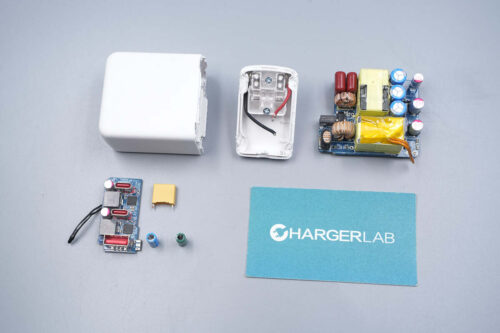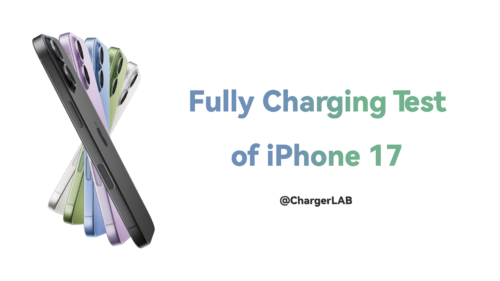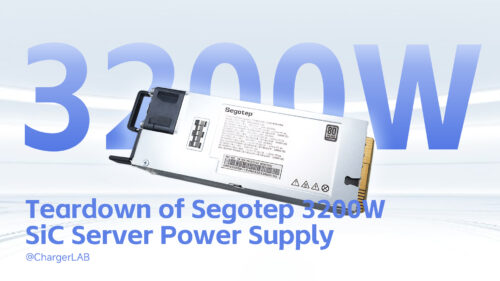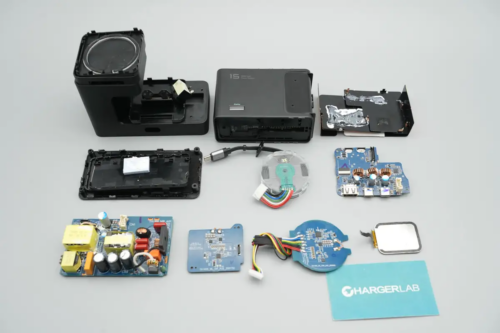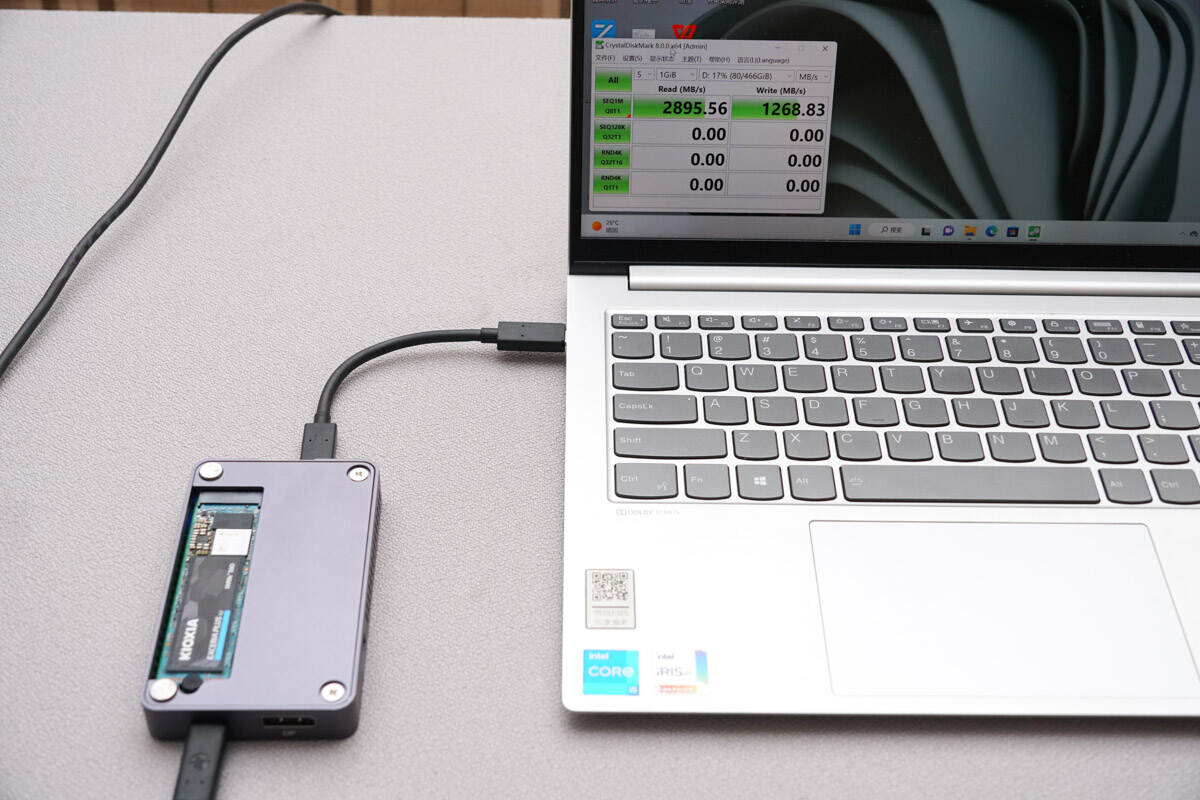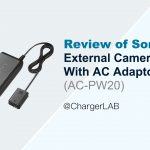Introduction
As handheld consoles continue to develop, most users may already own one, like the ROG Ally. However, handheld game consoles have some limitations in terms of image quality, and battery life.
Recently, we reported on the ROG 65W Gaming Charger Dock, which is the official accessory for the Ally. ChargerLAB has obtained this charger dock. So let's take a look!
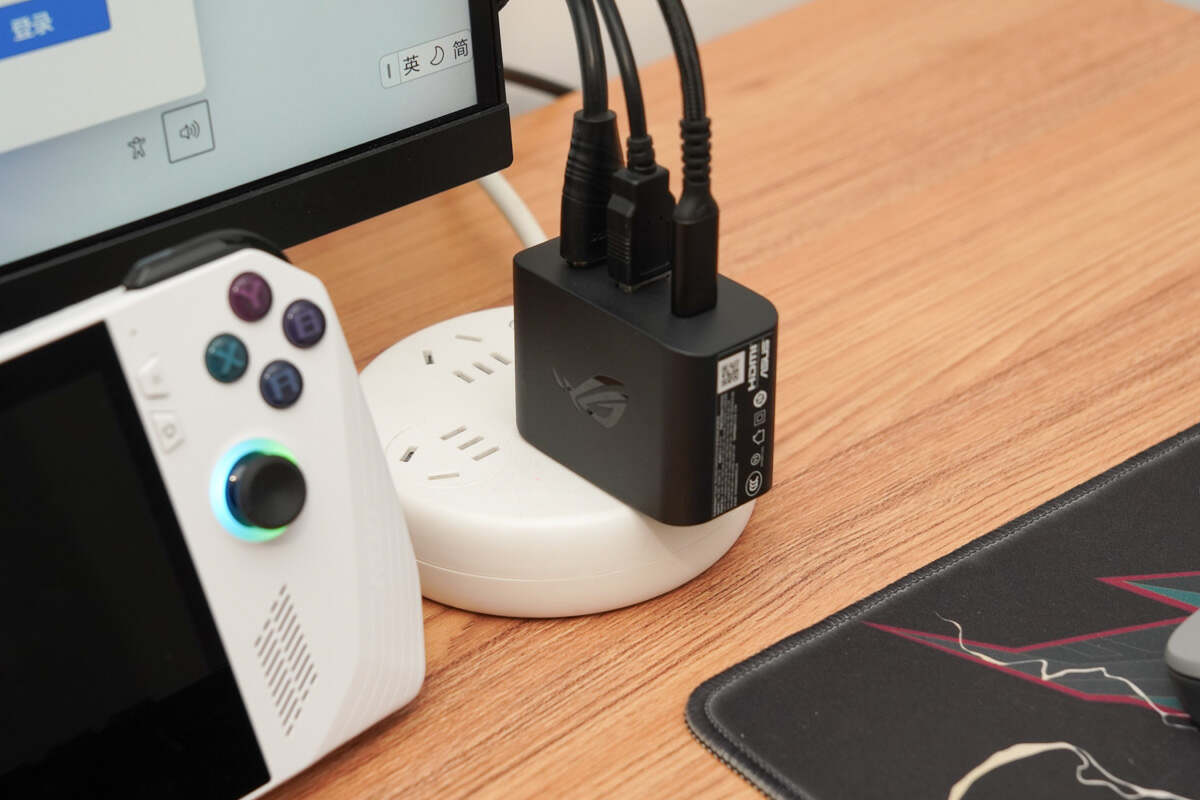
Product Appearance
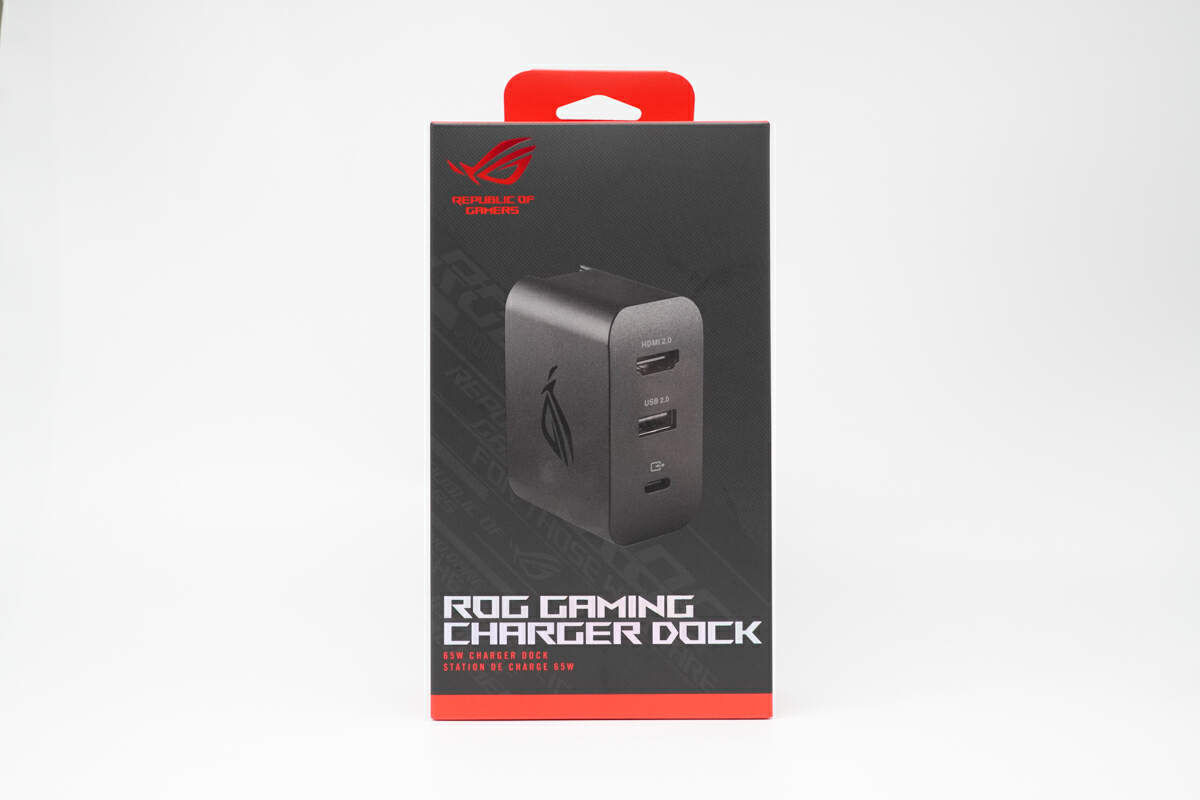
The charger packaging adopts a black and red contrasting design and the ROG logo is in the upper left corner.
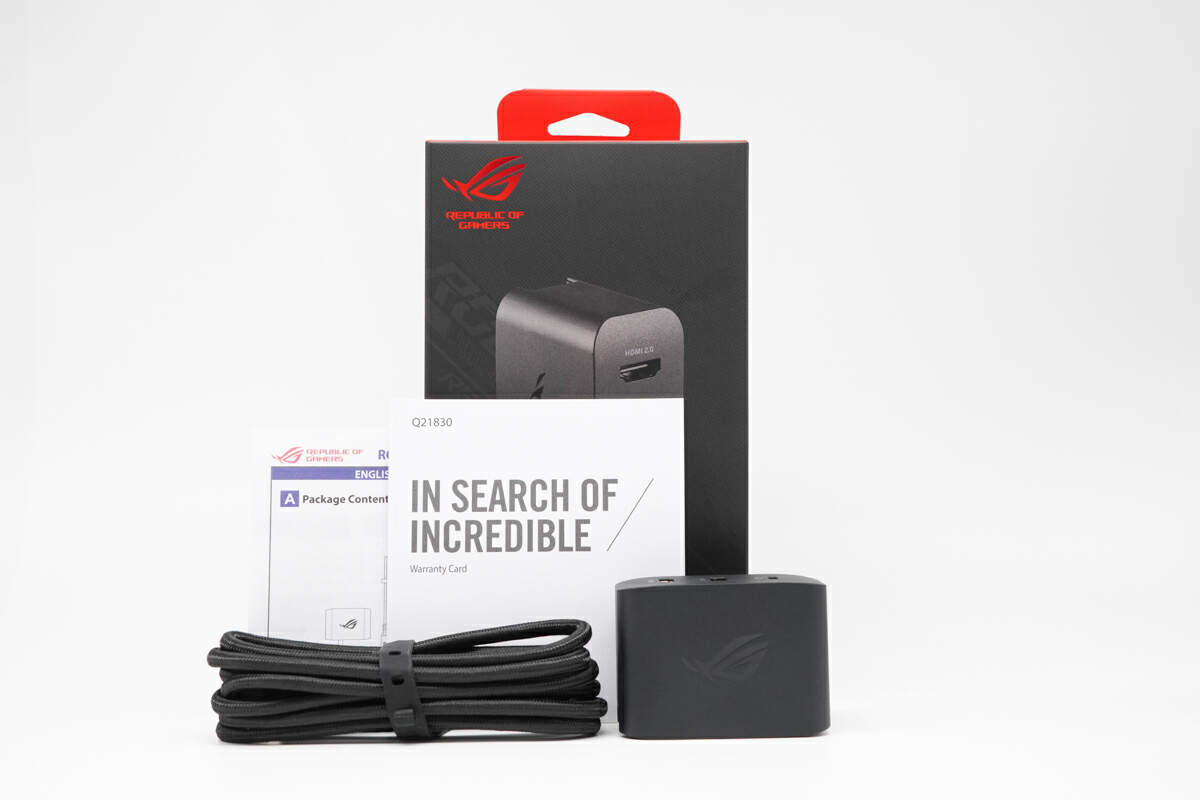
Except for the charger dock, it also comes with many accessories.
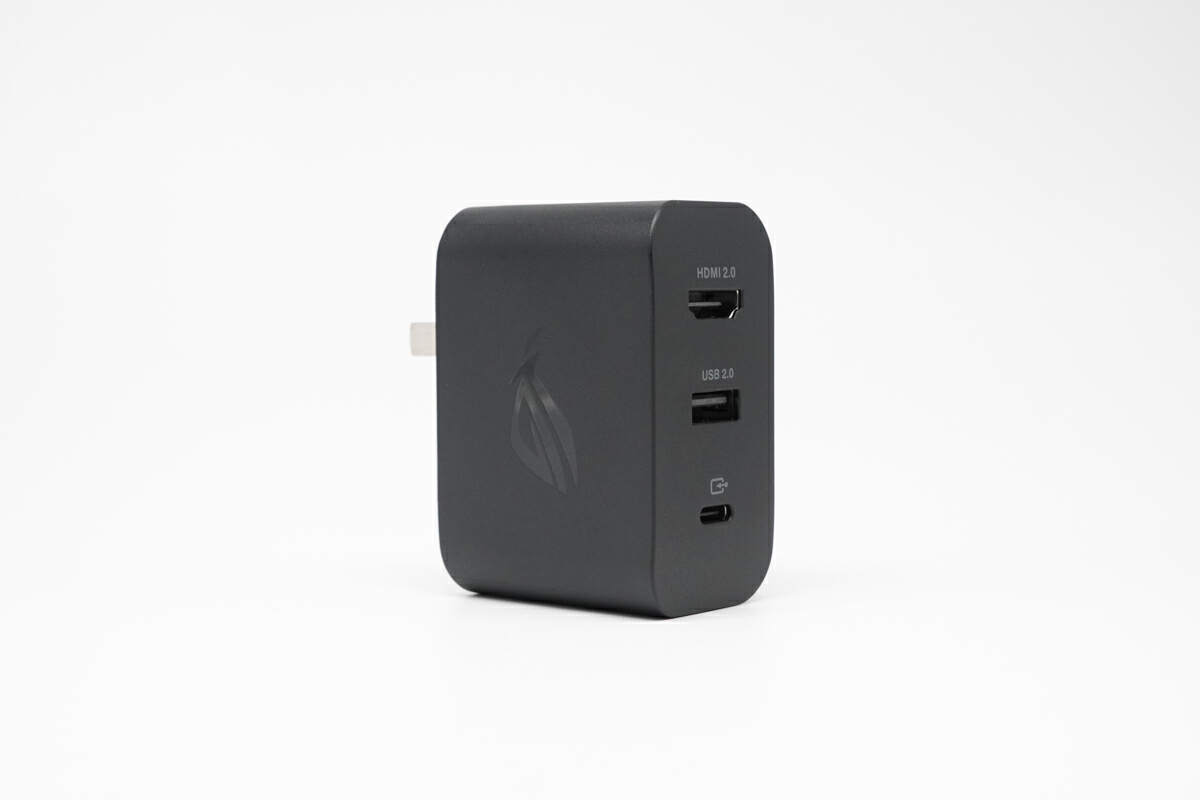
The charging dock is made of pure black, highly fire-retardant PC material with a fine-grained frosted surface. The front is engraved with glossy "ROG".
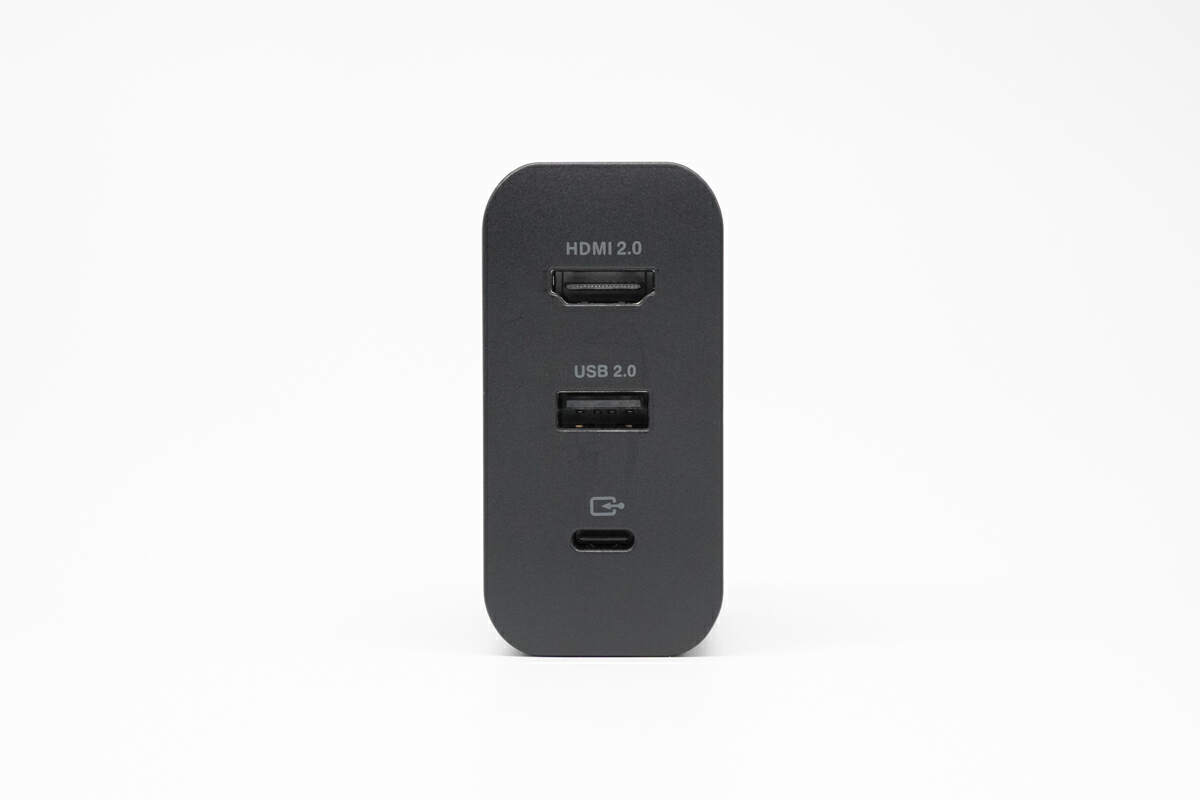
In addition, the output panel has HDMI, USB-A, and USB-C ports.
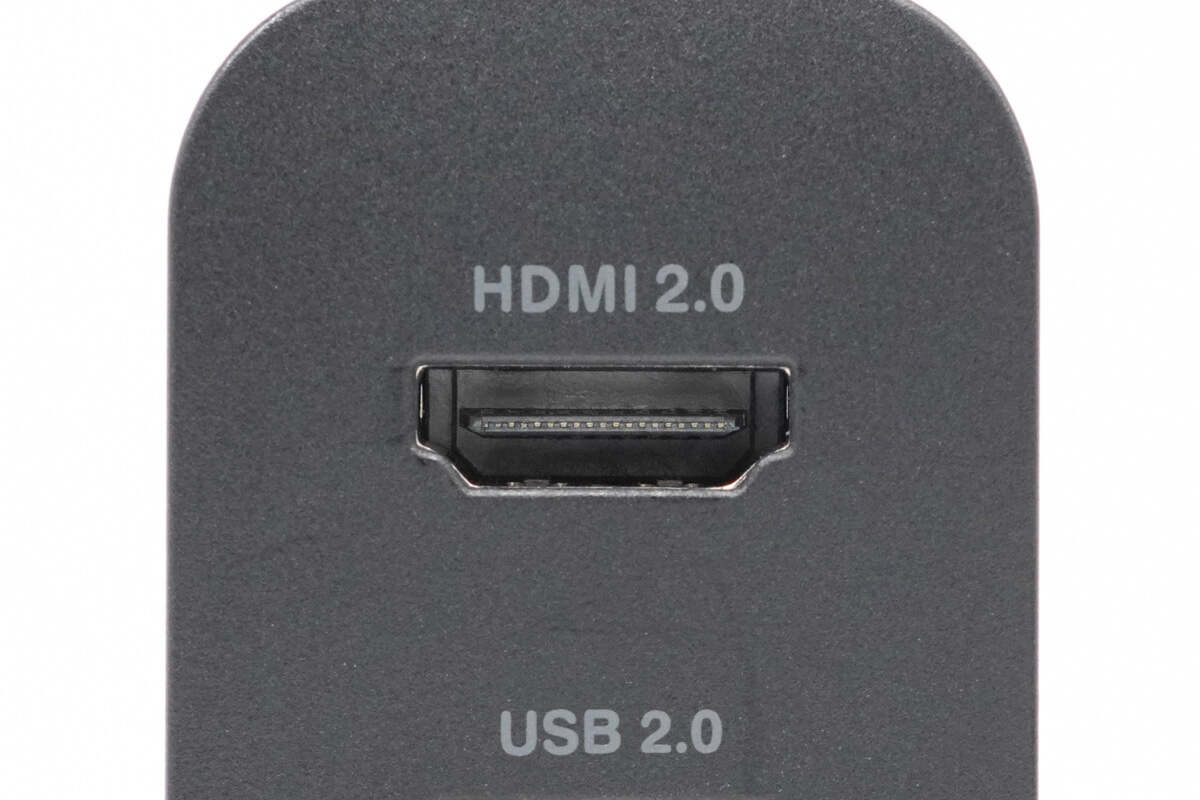
The video transmission port is HDMI 2.0.
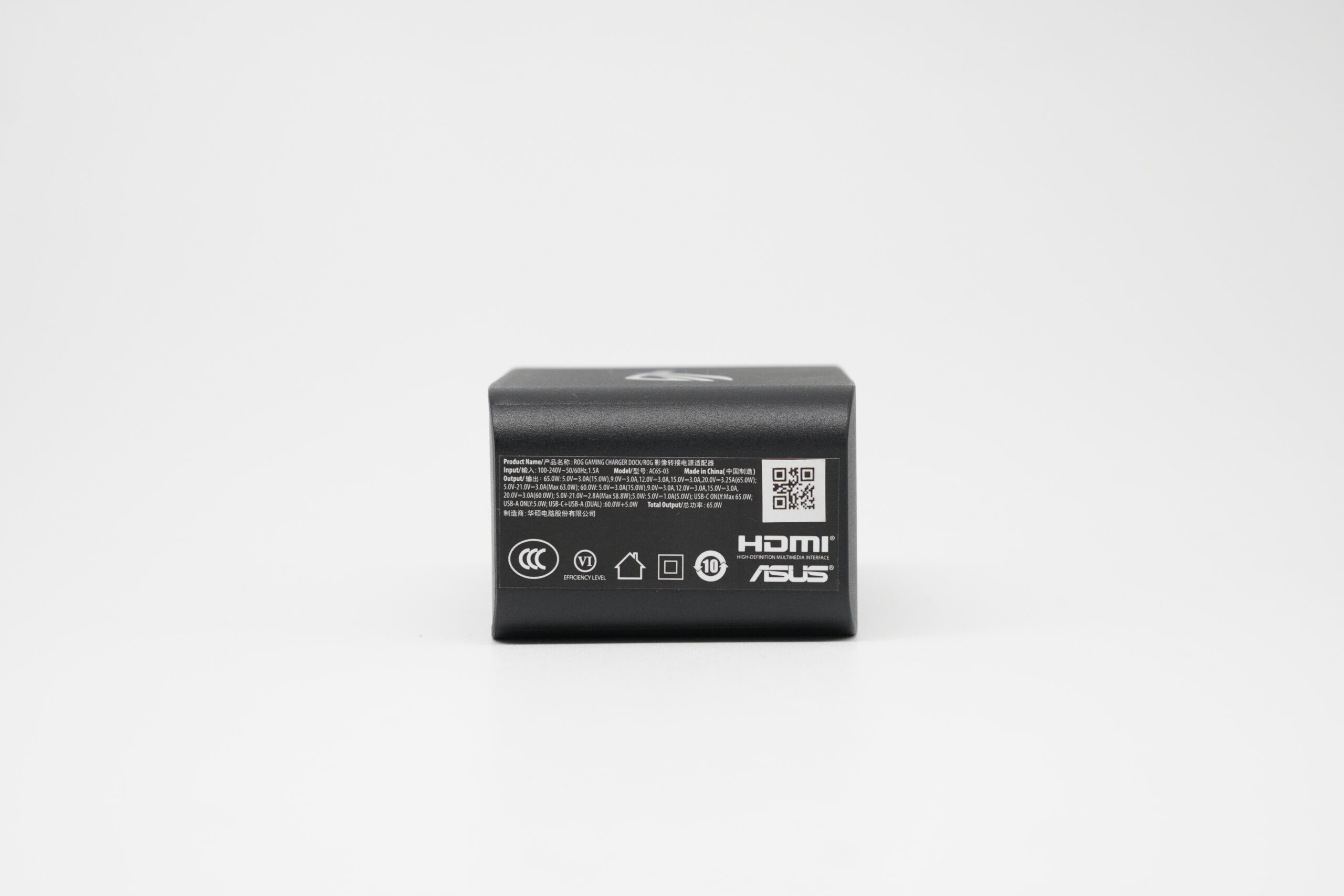
All the specs info are printed on this side. Model is AC65-03. Power rate is 65W. It can support input of 50-240V, 50-60Hz 1.5A.
The output power of USB-C, USB-A, and USB-C+USB-A are 65W, 5W, and 60W+5W.
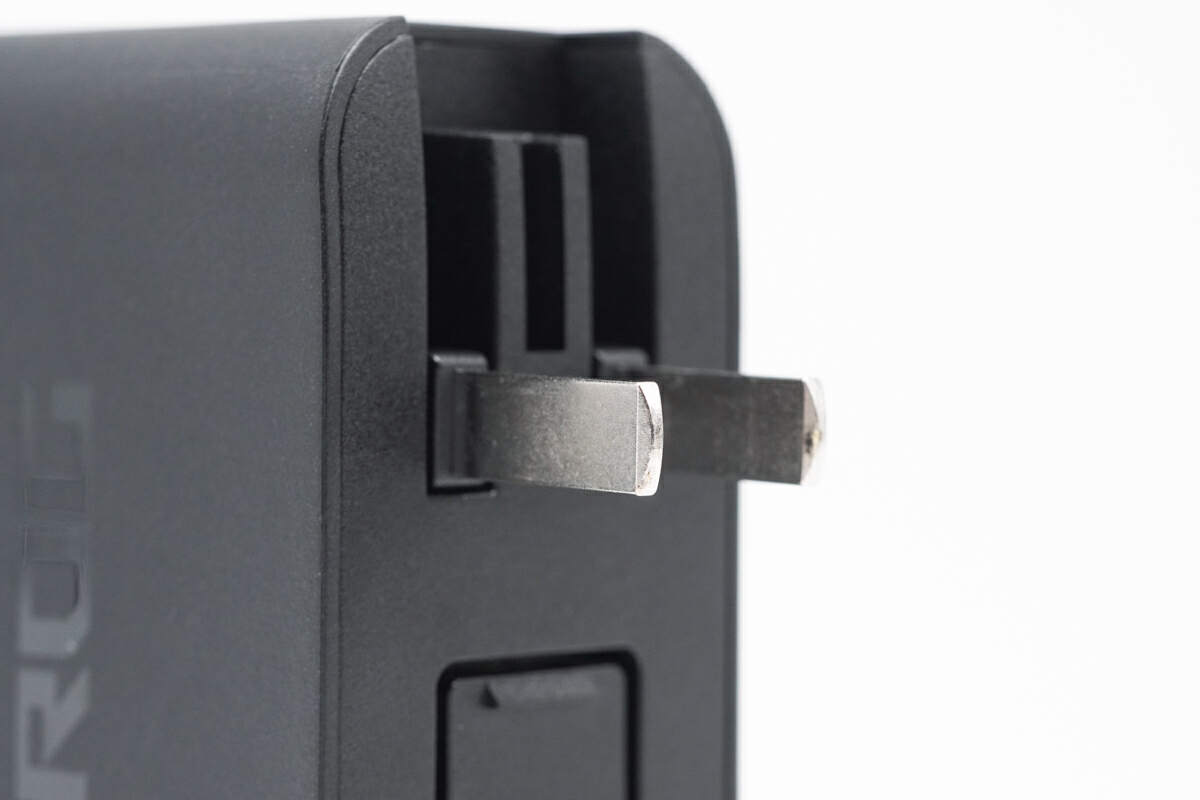
The charger has a foldable prongs.
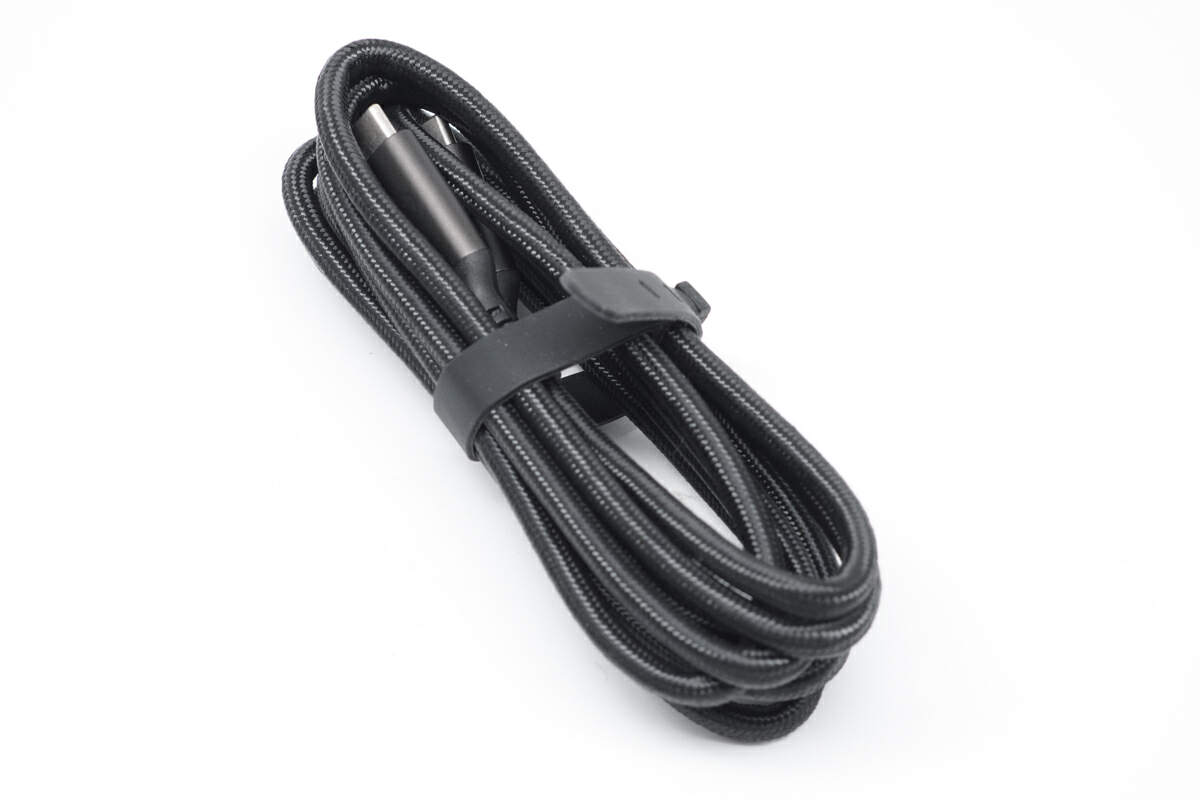
The bundled cable is a dual USB-C type. It's braided from nylon.
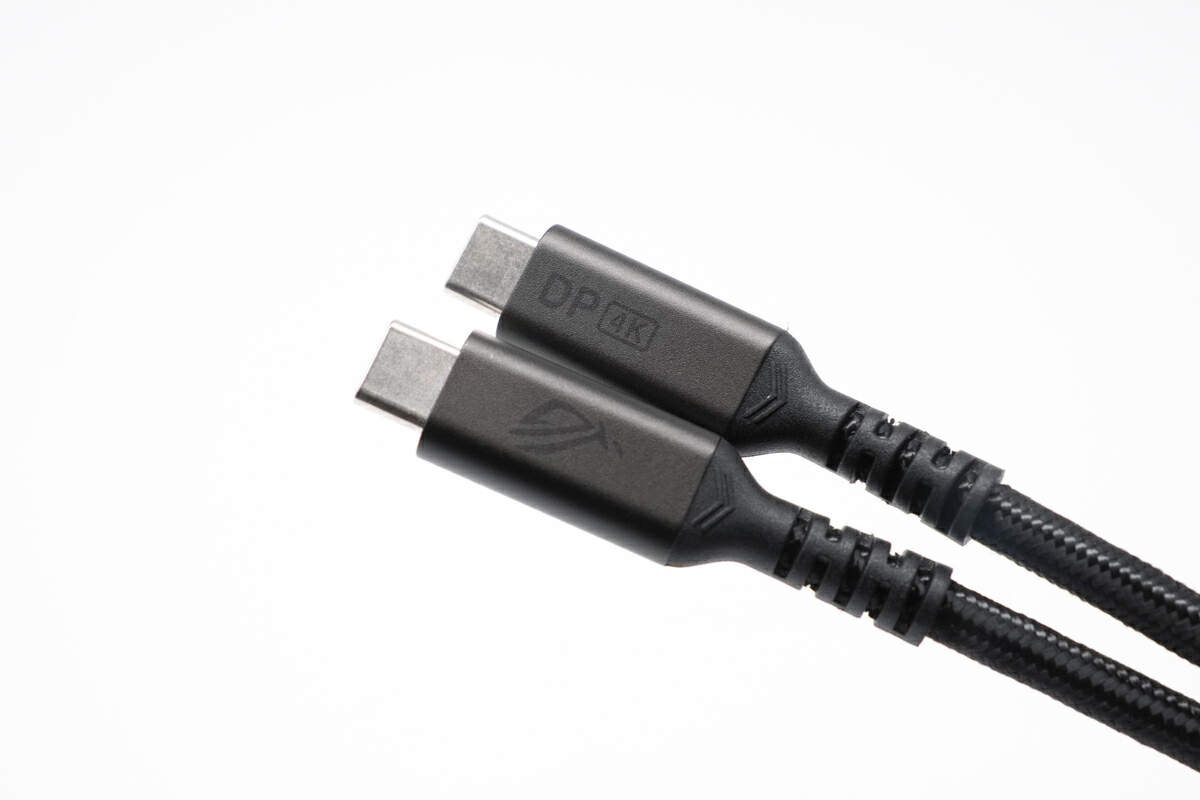
The connectors at the cable ends are thicker than others.
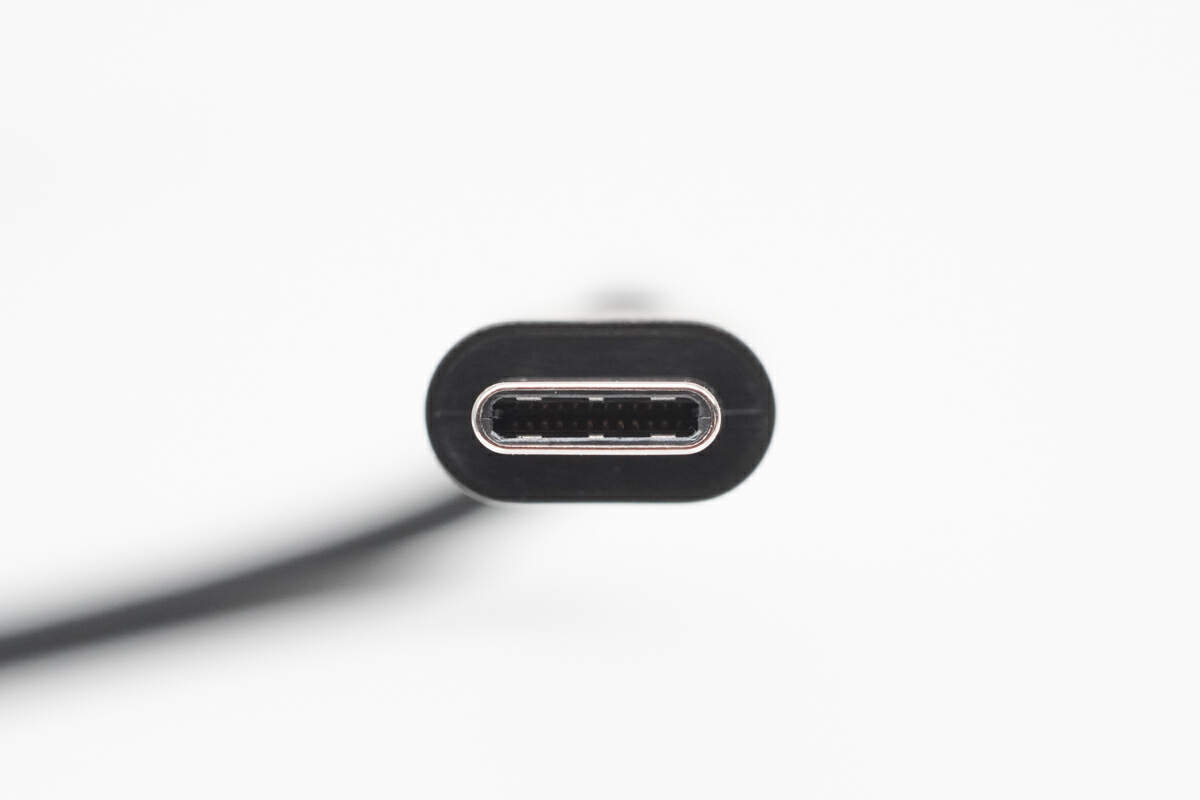
The USB-C connector employs a 24-pin design, potentially allowing for more extensive transmission functionalities.
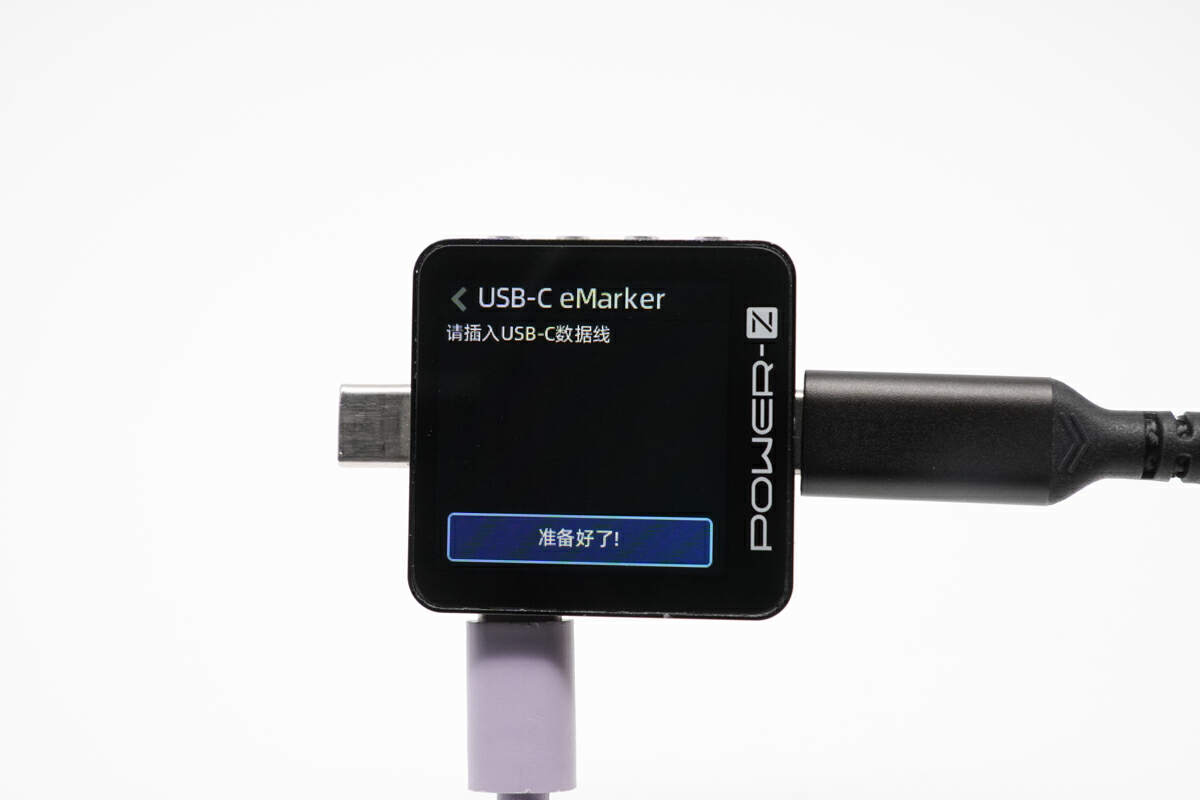
The ChargerLAB POWER-Z KM003C shows that it does not have an E-marker chip.
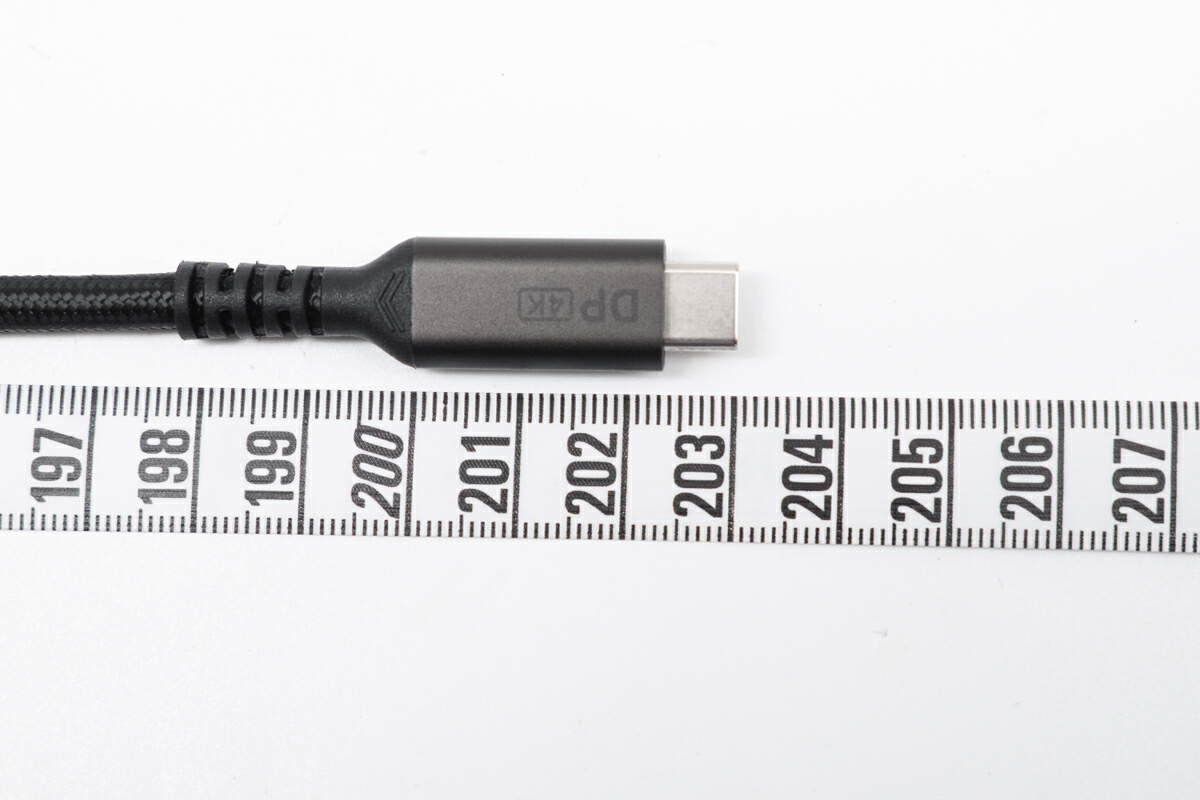
And its length is also about 2m (6' 56'').
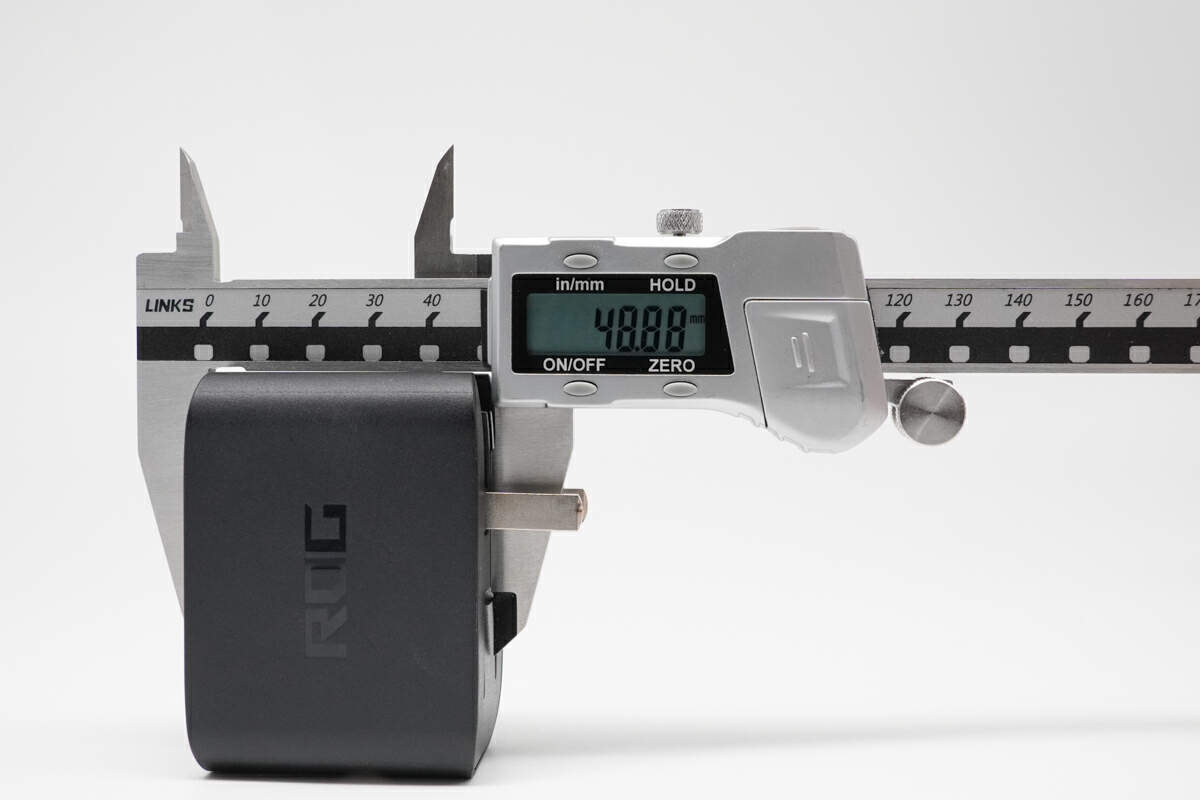
The length of the ROG 65W Gaming Charger Dock is about 49mm (1.93 inches).
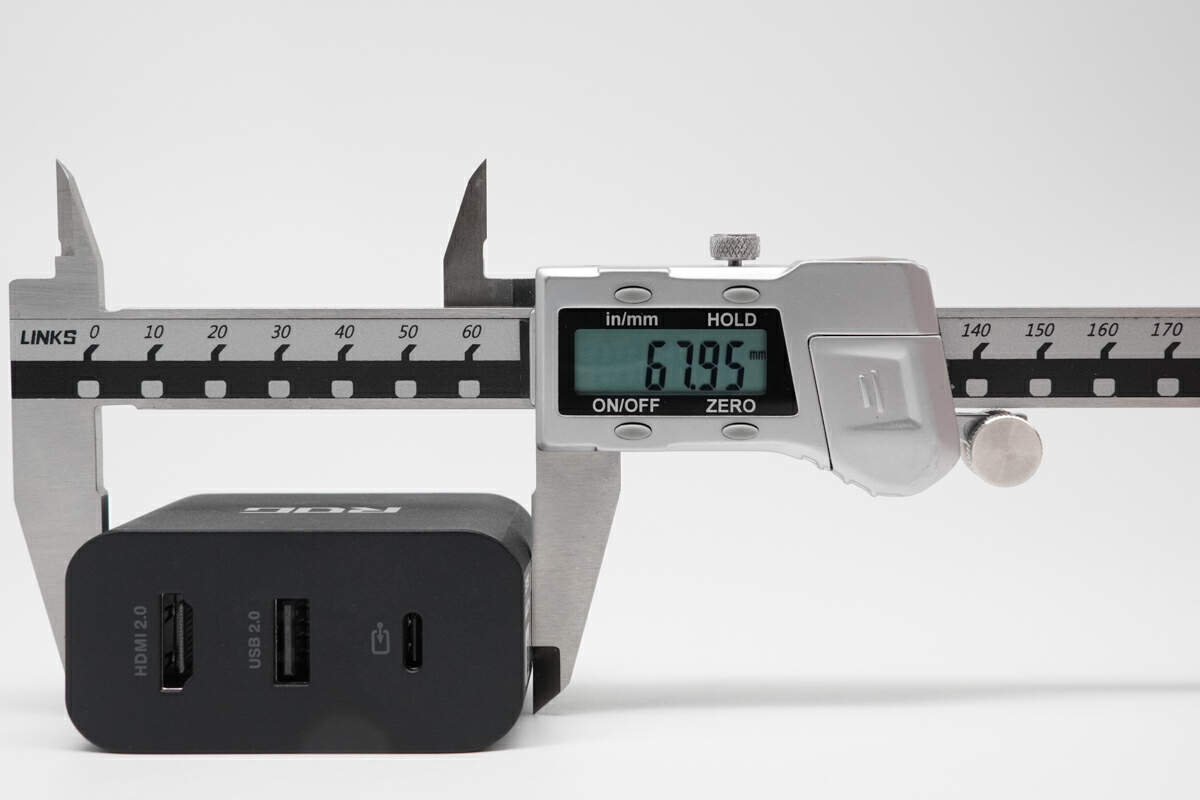
The width is about 68mm (2.68 inches).
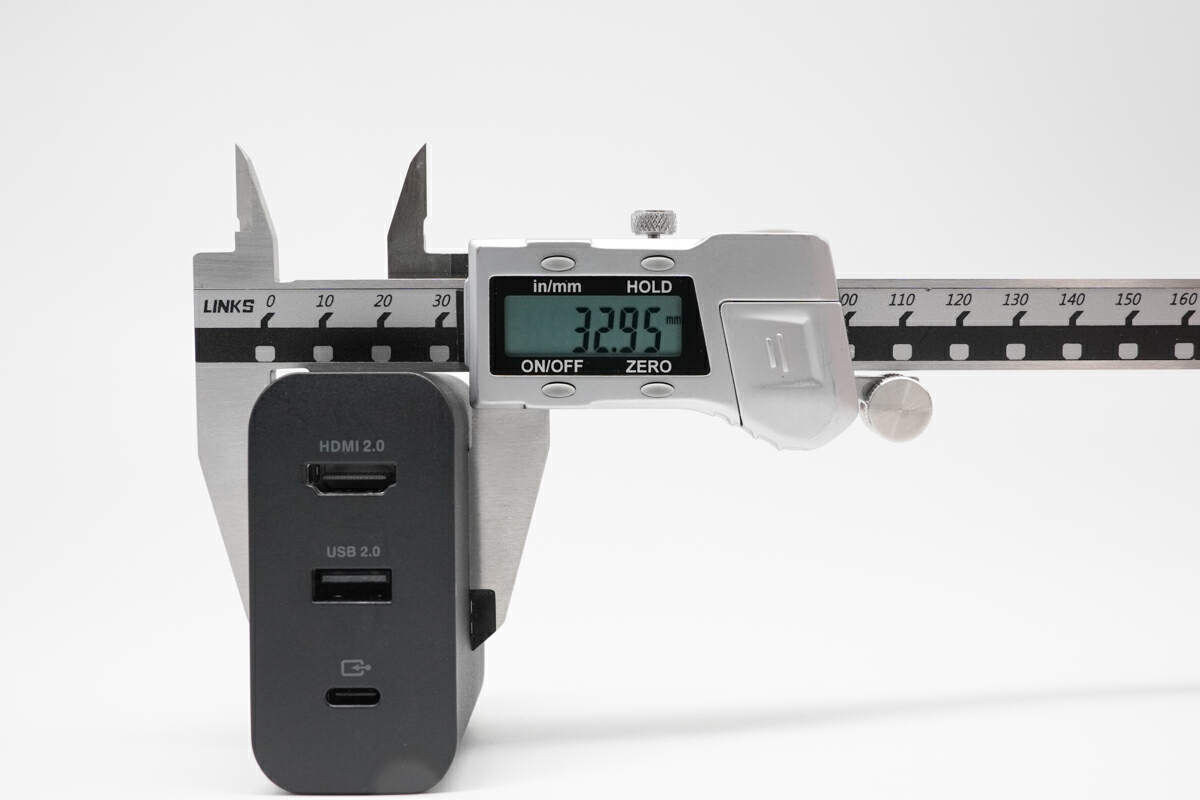
The thickness is about 33mm (1.3 inches).
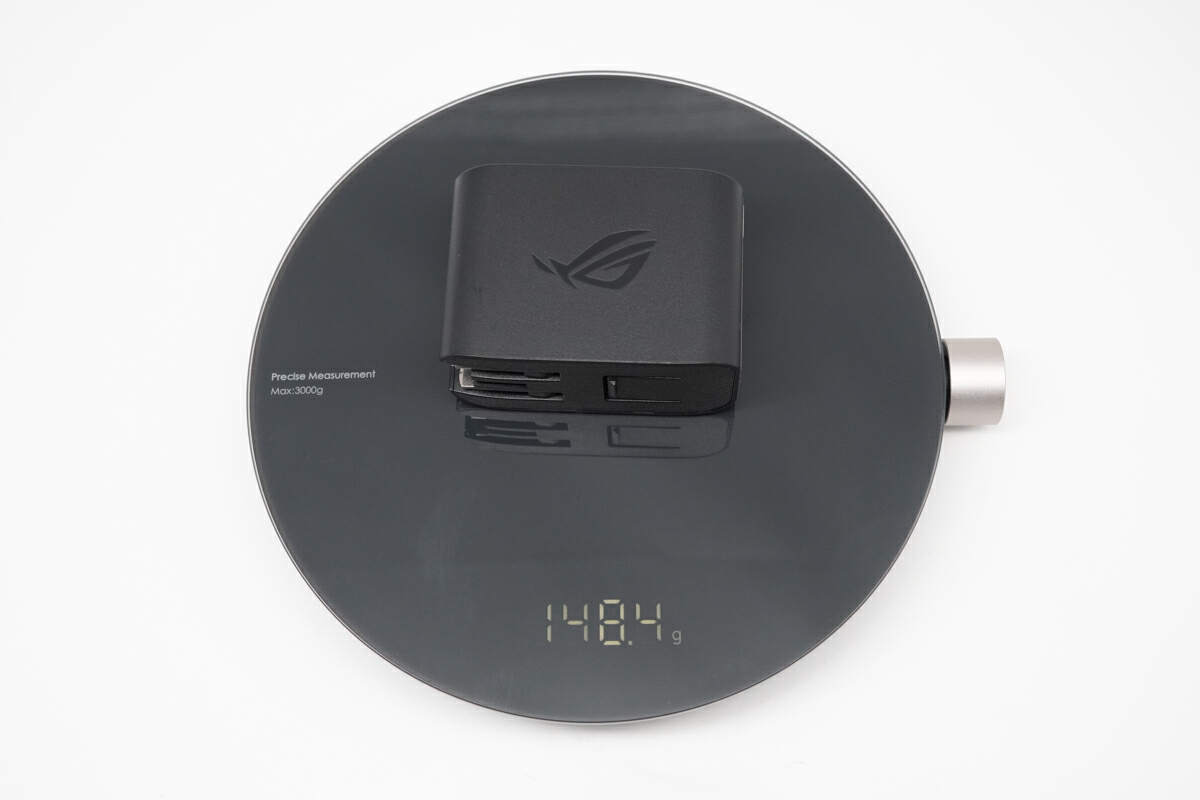
And the weight is about 148g (5.22 oz).
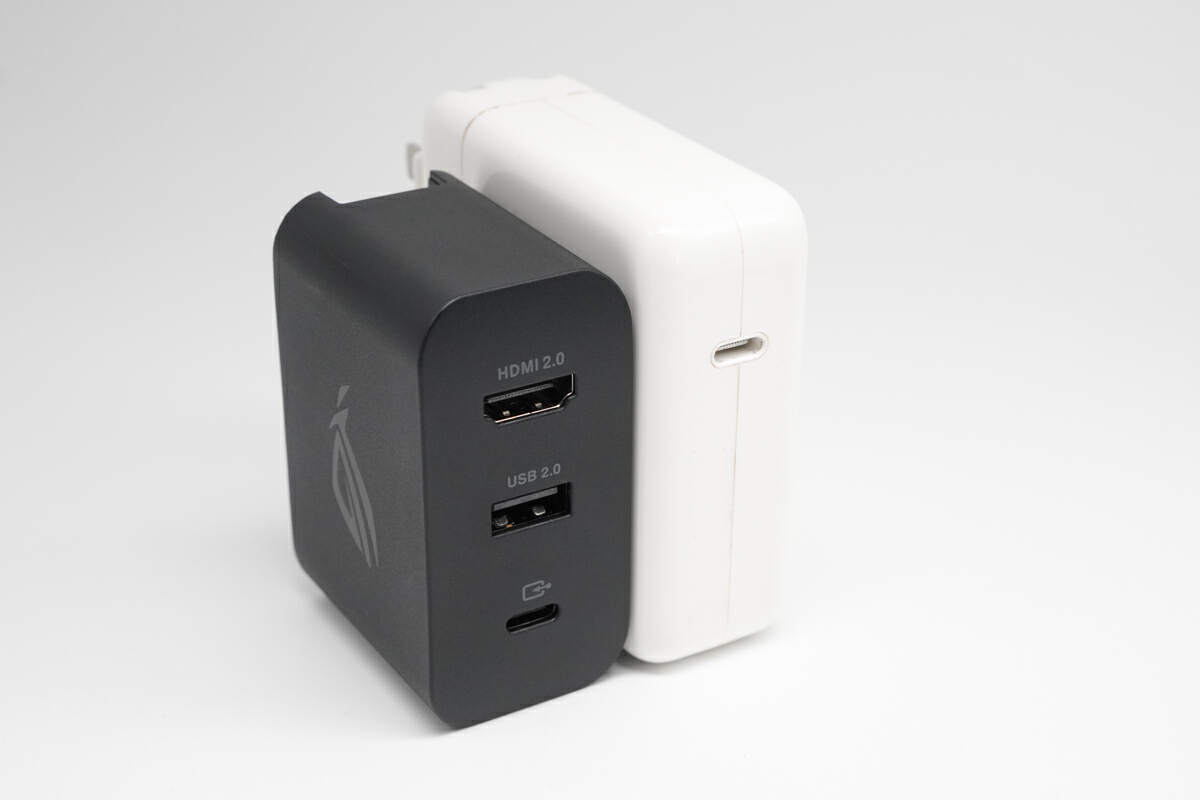
It is smaller than Apple’s original 67W charger.
Protocol Test
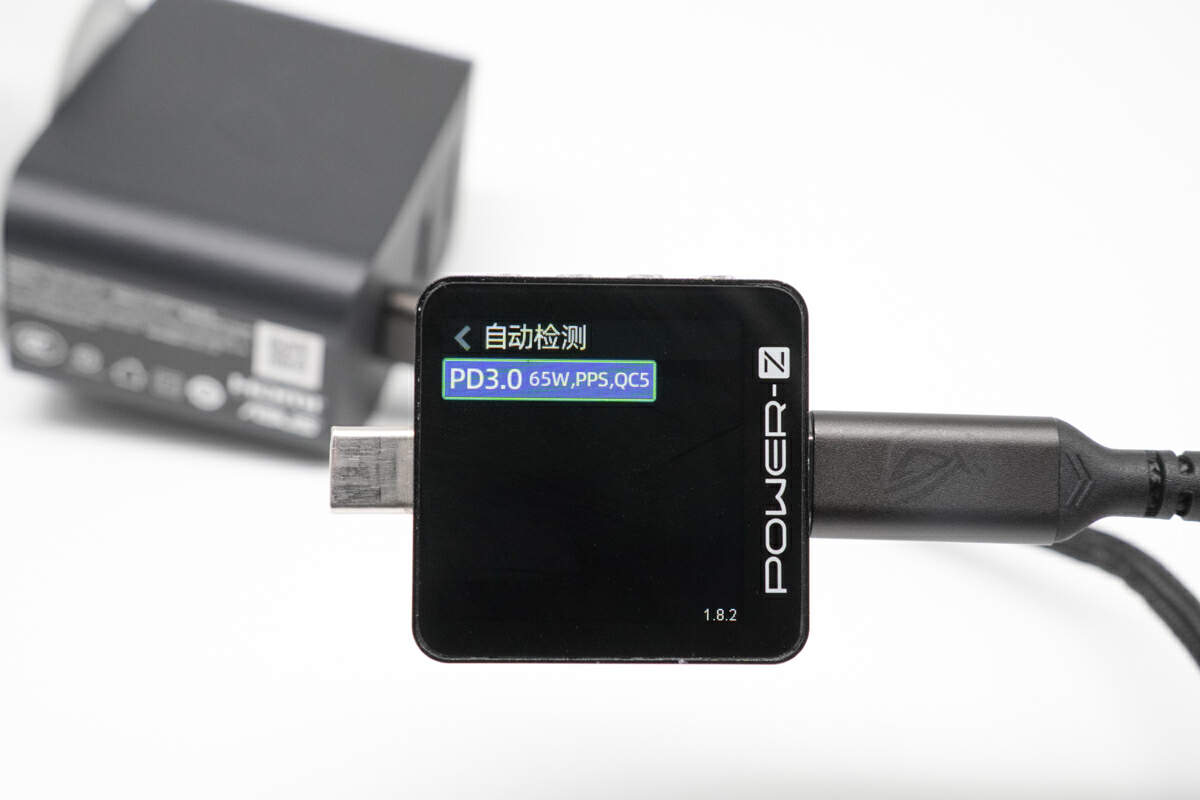
Our tester shows that the USB-C supports PD3.0, PPS, QC5 protocols.
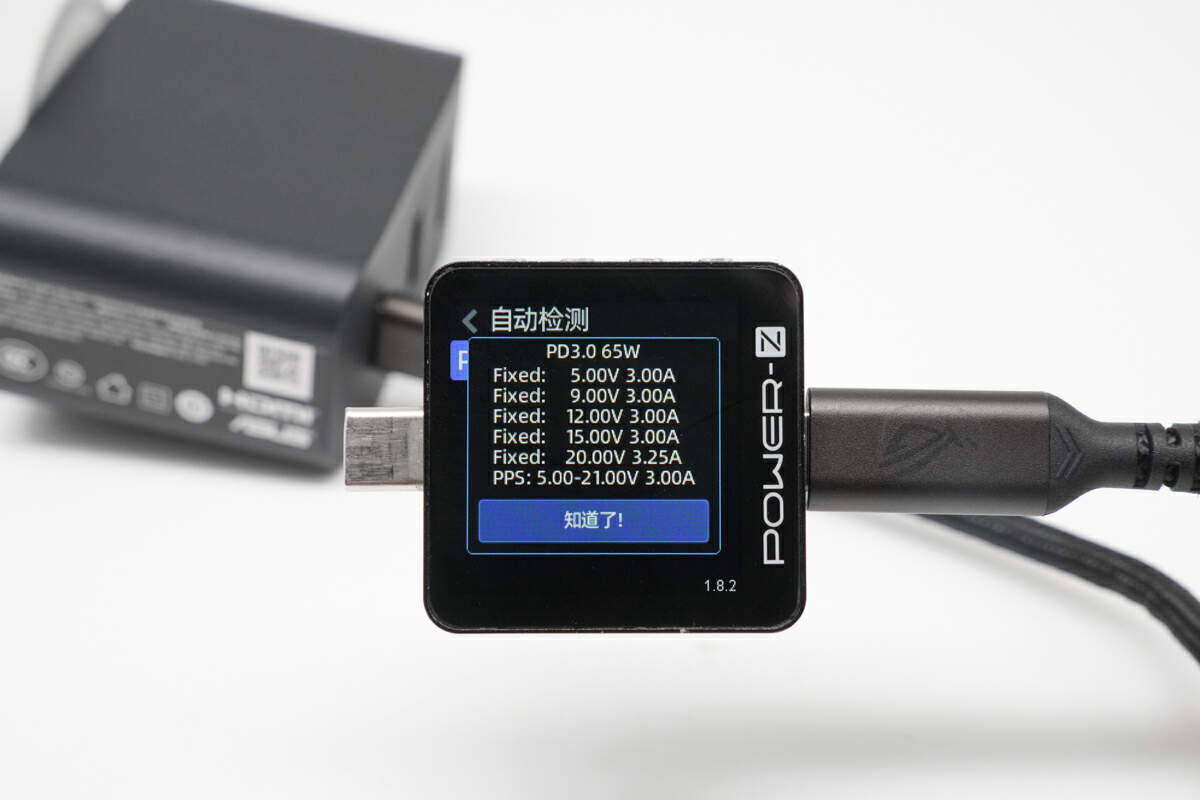
It also supports five fixed PDOs of 5V3A, 9V3A, 12V3A, 15V/3A, and 20V3.25A, and a set of 5-21V/3A PPS.
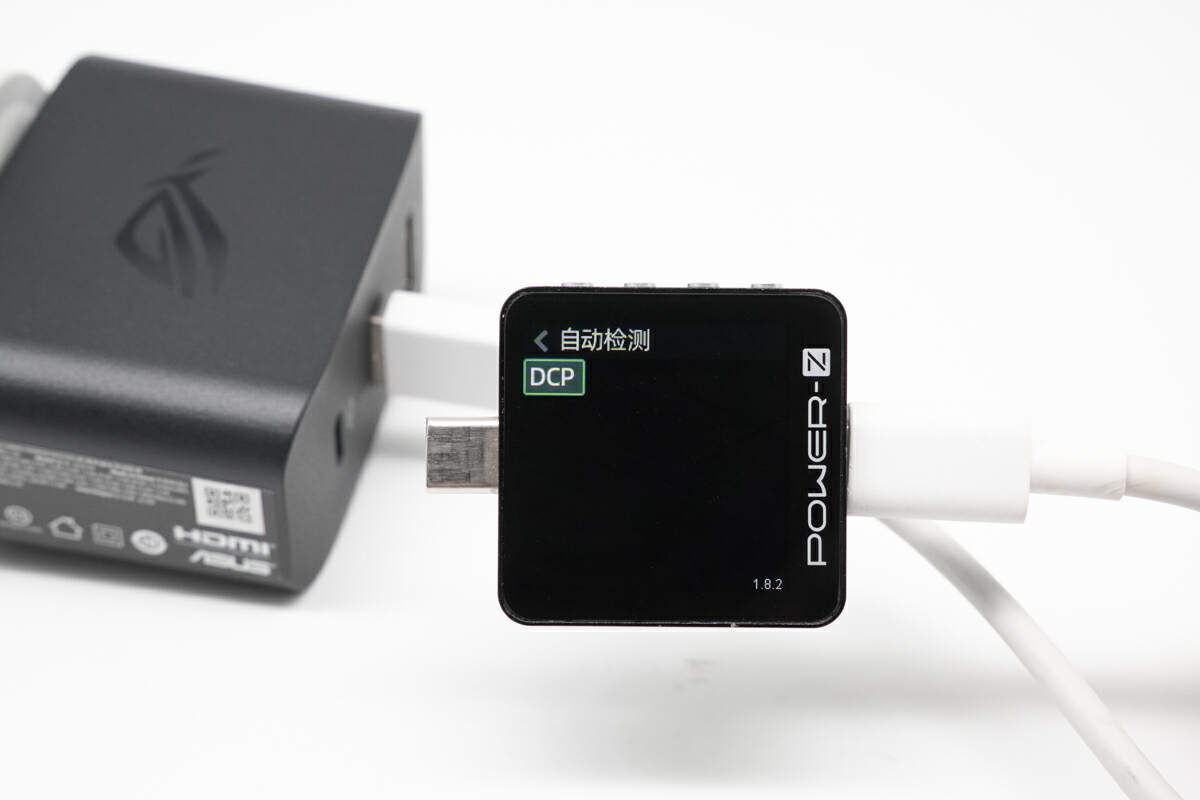
And the USB-A only supports the DCP protocol.
Handheld Gaming Console
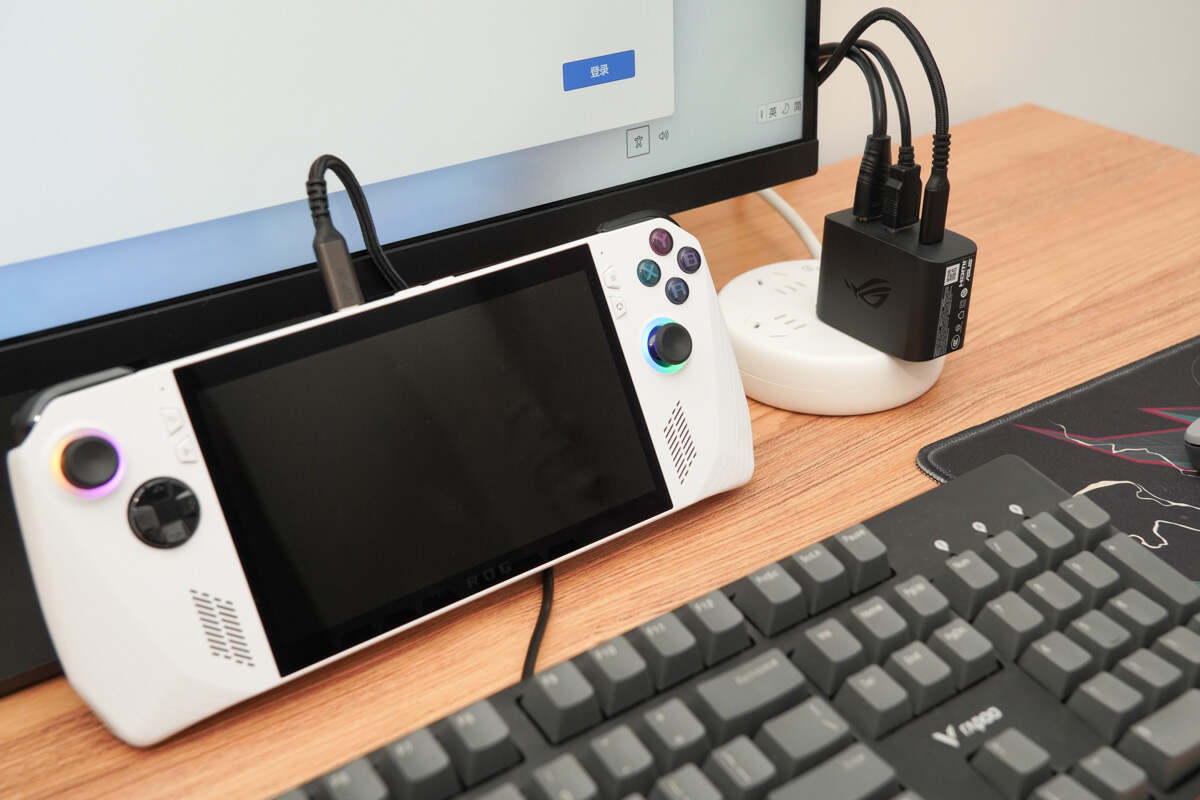
It is perfect for charging and video expansion.
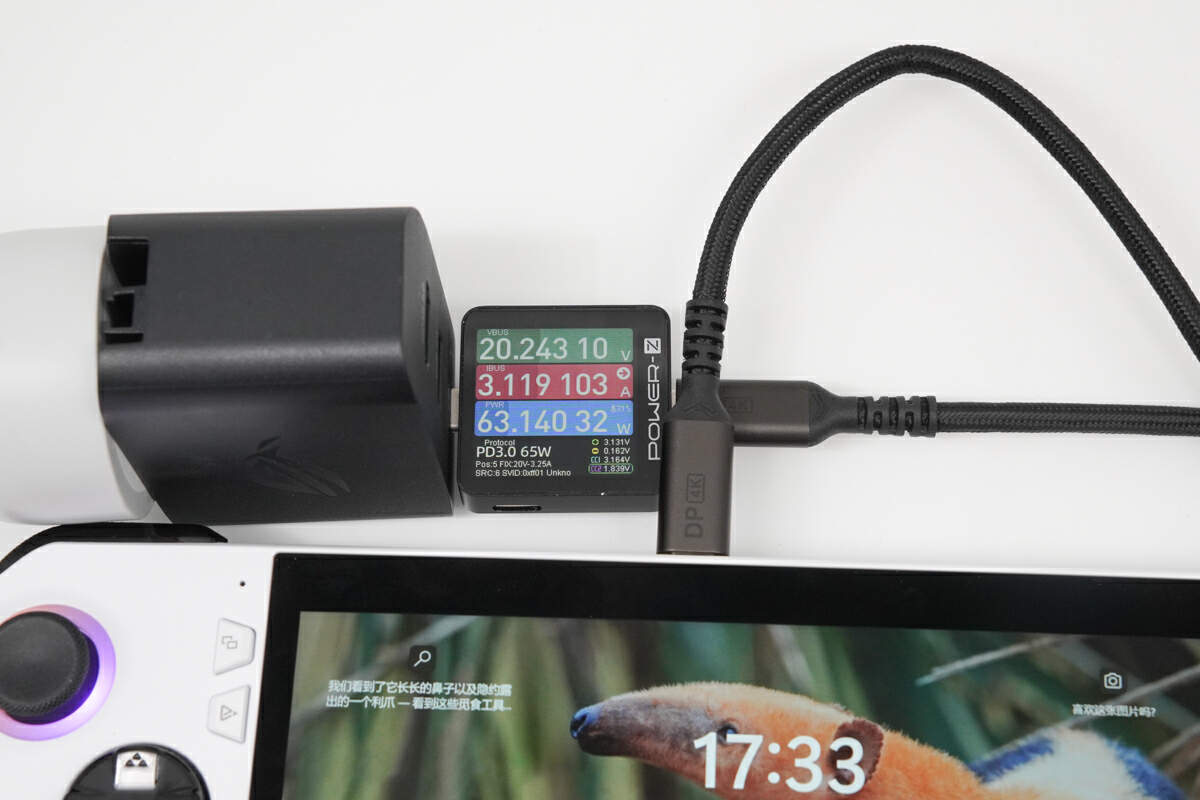
It can provide 20.24V 3.12A 63.14W output power to ROG Ally.
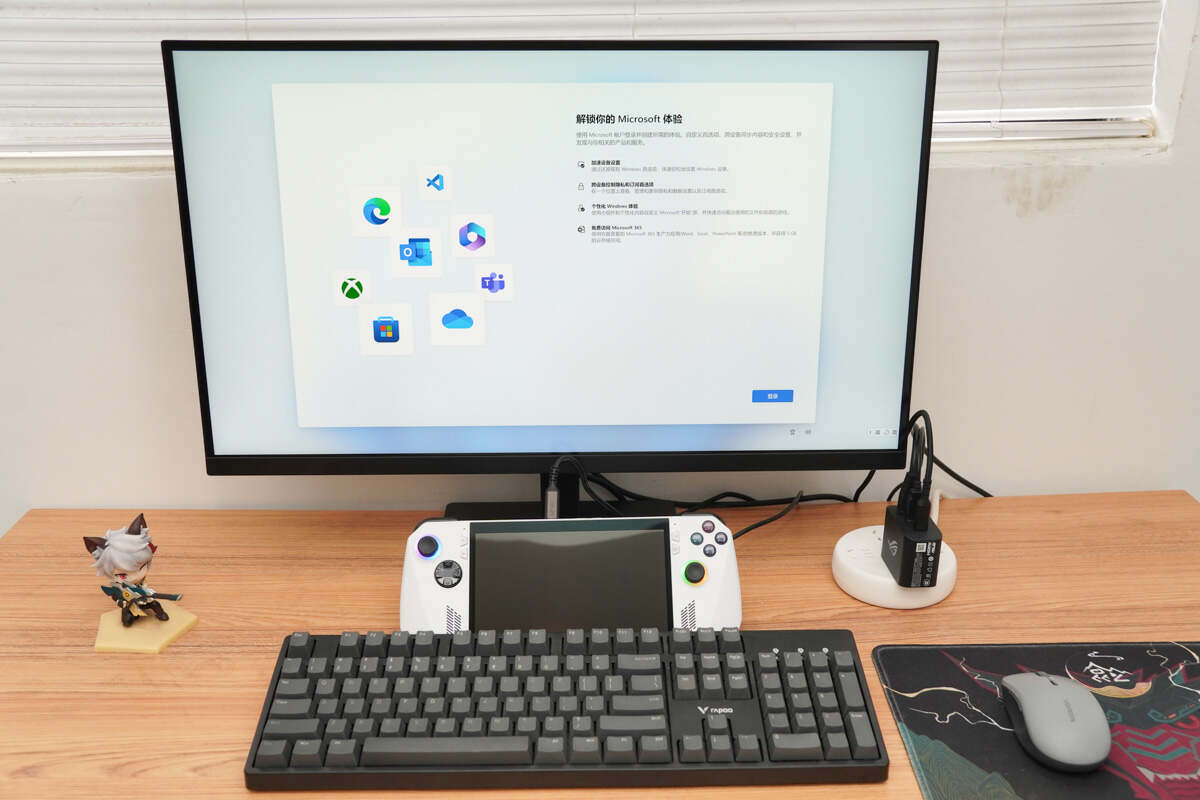
Its USB-A can connect external peripherals such as keyboard and mouse.
Other Devices
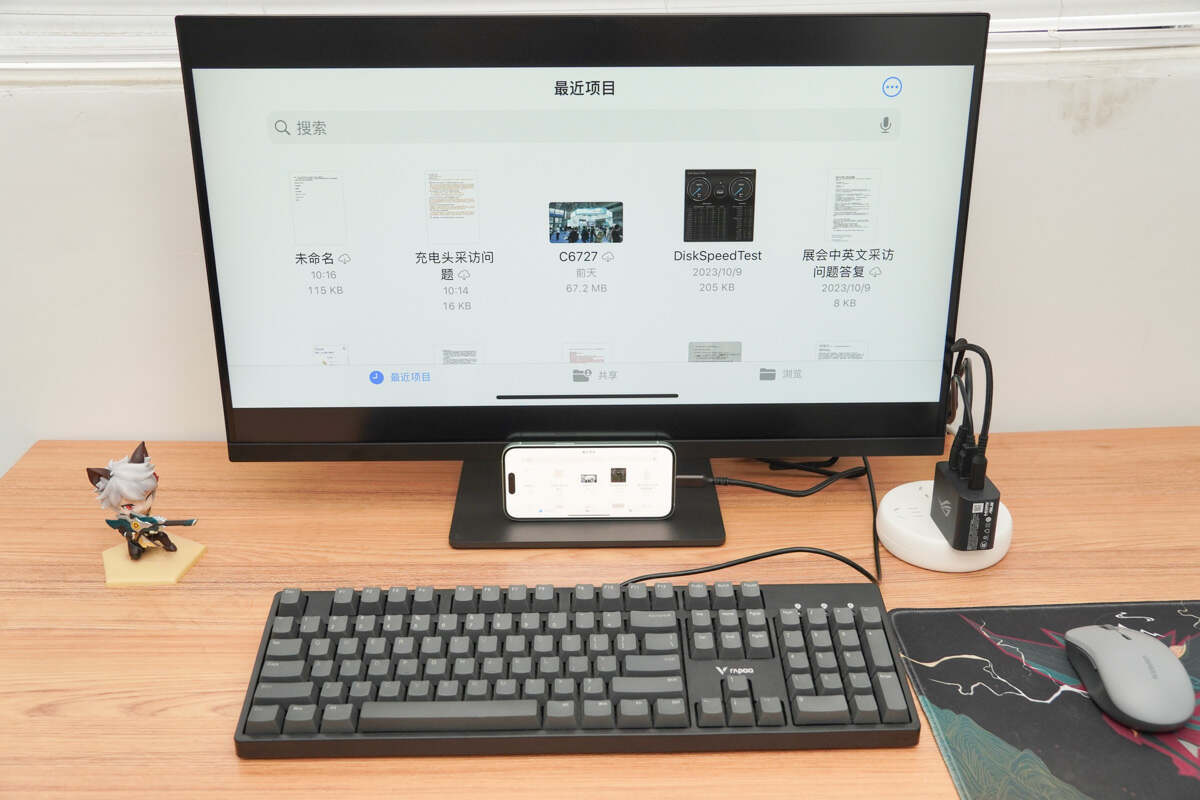
Pairing with an iPhone 15 or other devices that support expansion functions, it can also be connected through the dual USB-C cable to expand the display.
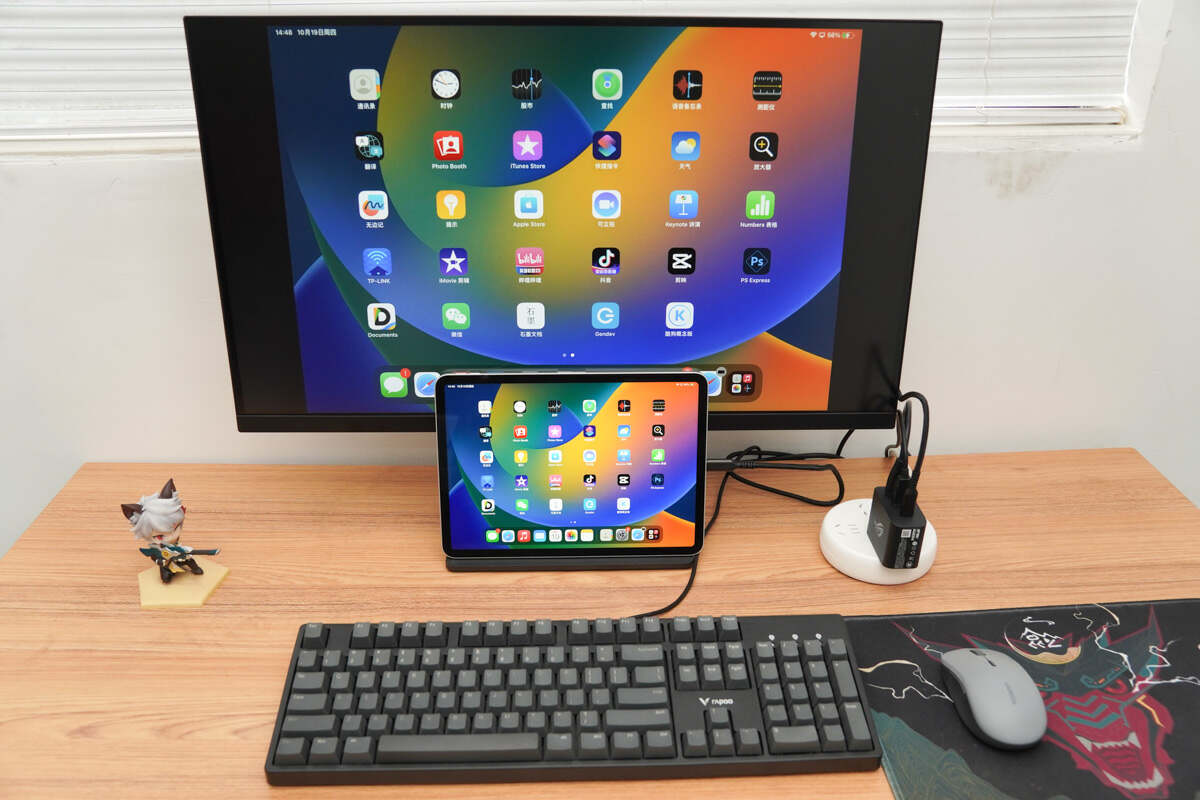
It can also work with tablets such as iPad, MatePad, and Redmi Pad.
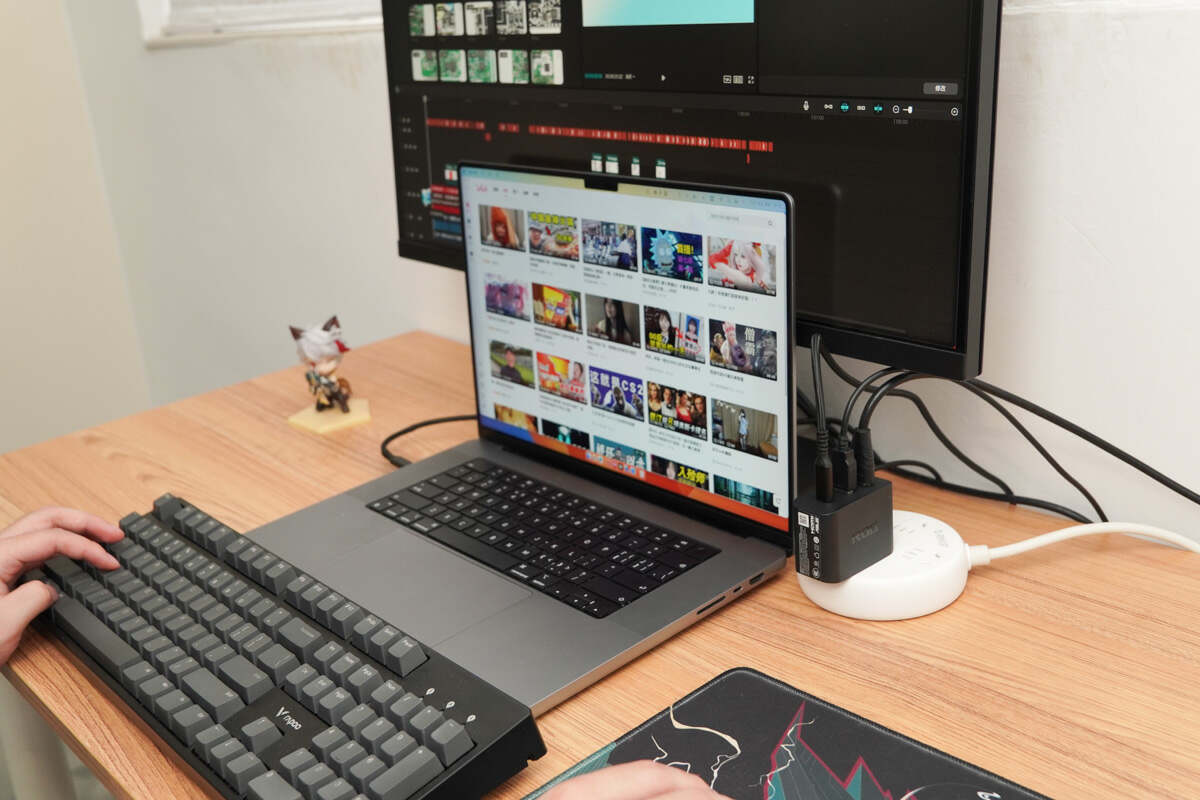
When connected to a business laptop, it can easily achieve dual-screen display.
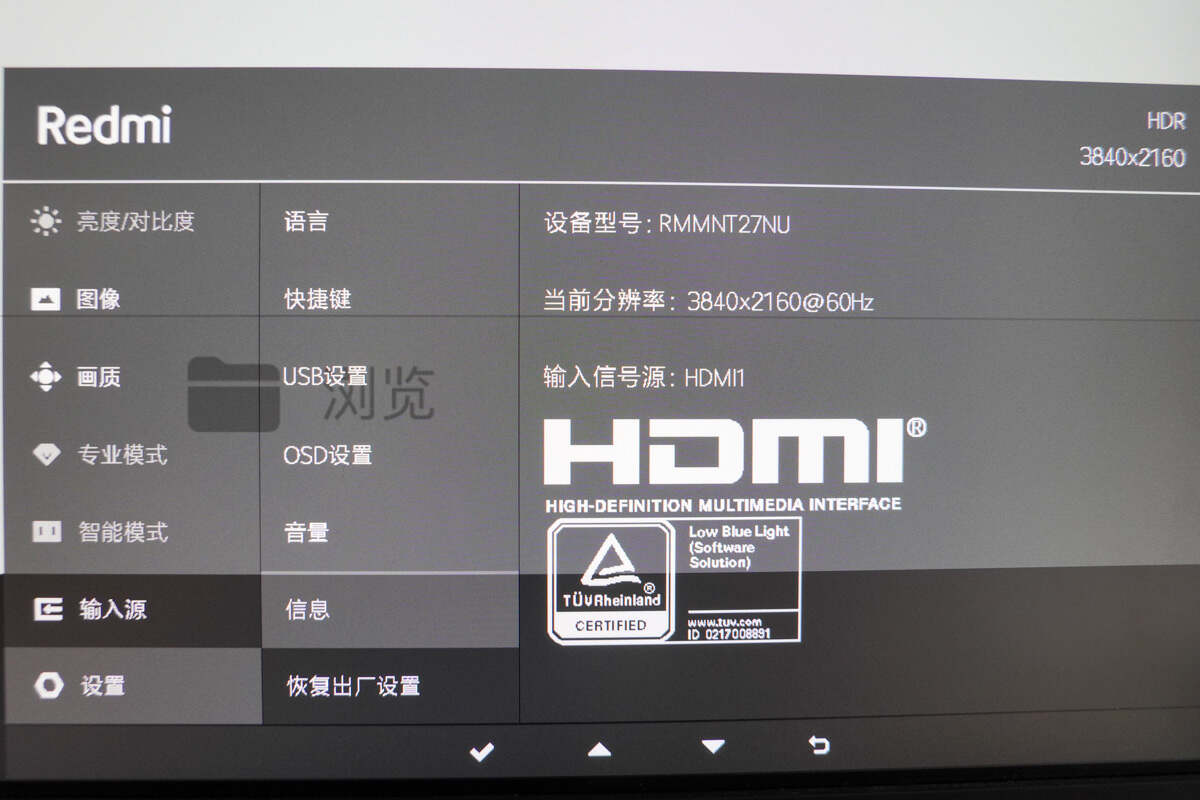
The display specification of the HDMI is 4K (3840*2160p) @60Hz.
Port Transfer
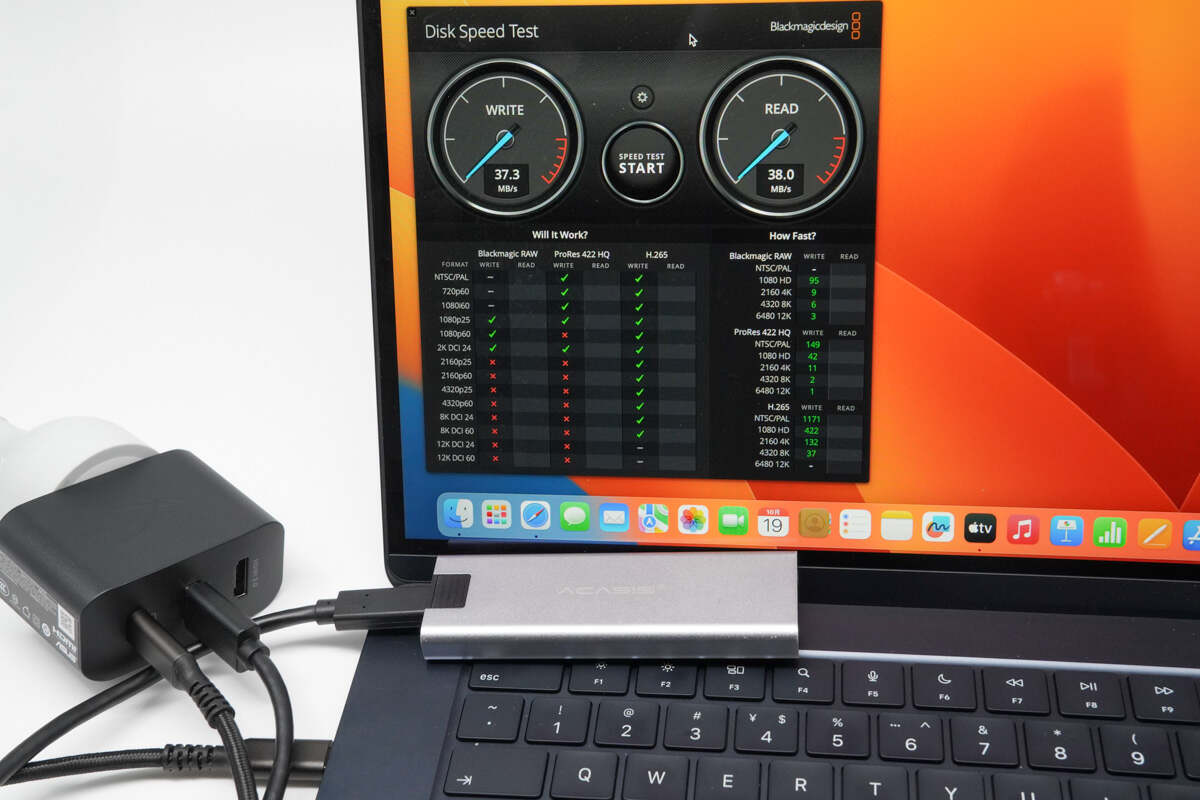
Through the Disk Speed Test on macOS, the reading speed of the USB-A port can reach 38MB/s, and the writing speed can reach 37.3MB/s. So it is USB 2.0 specification.
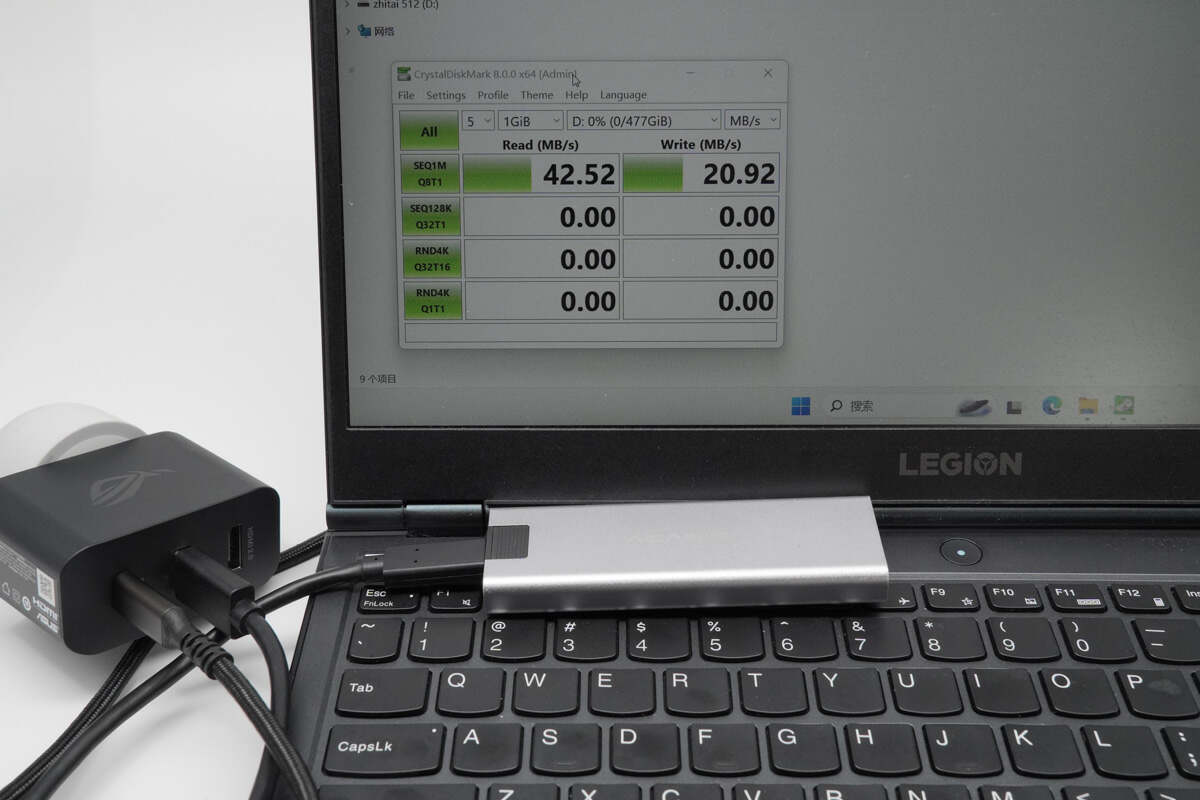
The result on Windows is basically the same as on MacOS. So it must be a USB 2.0 port.
Compatibility Test
Next, let's take a look at its charging compatibility, starting with USB-C.
USB-C
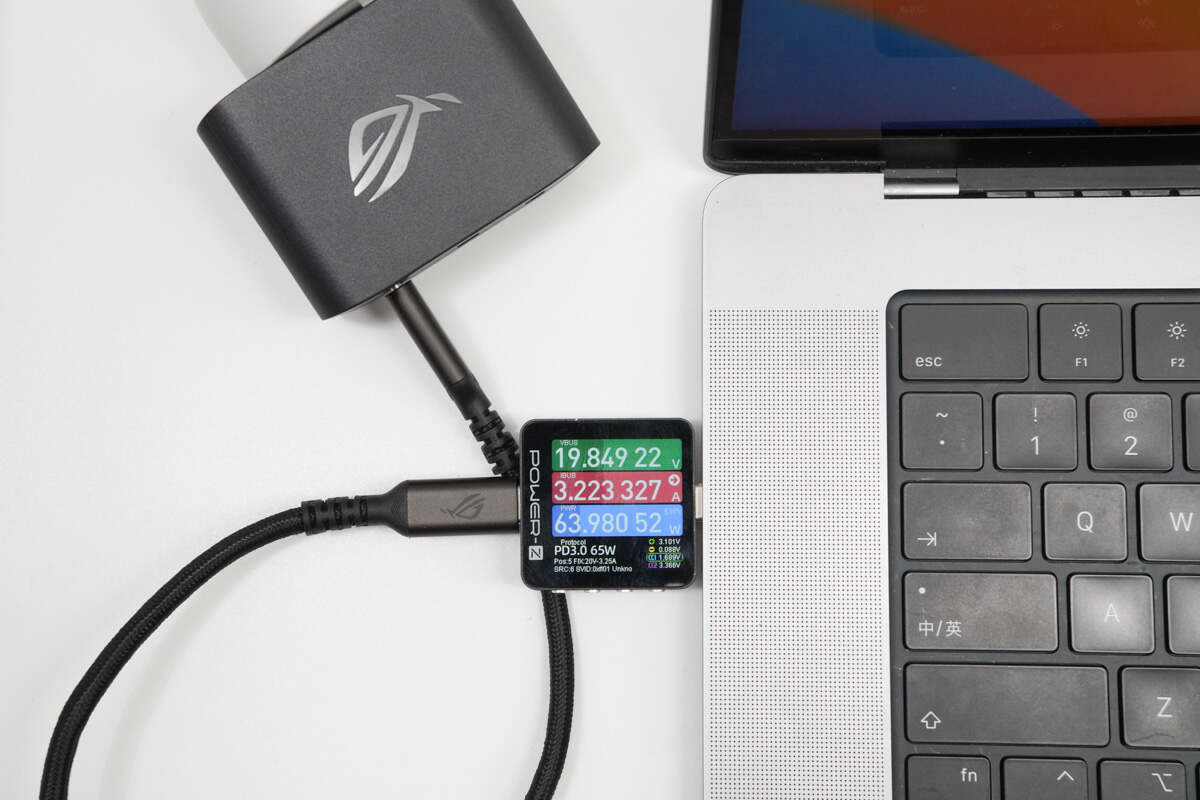
Our tester shows that when the charger is connected to the MacBook Pro 16, the input power is 19.85V 3.22A 63.98W.
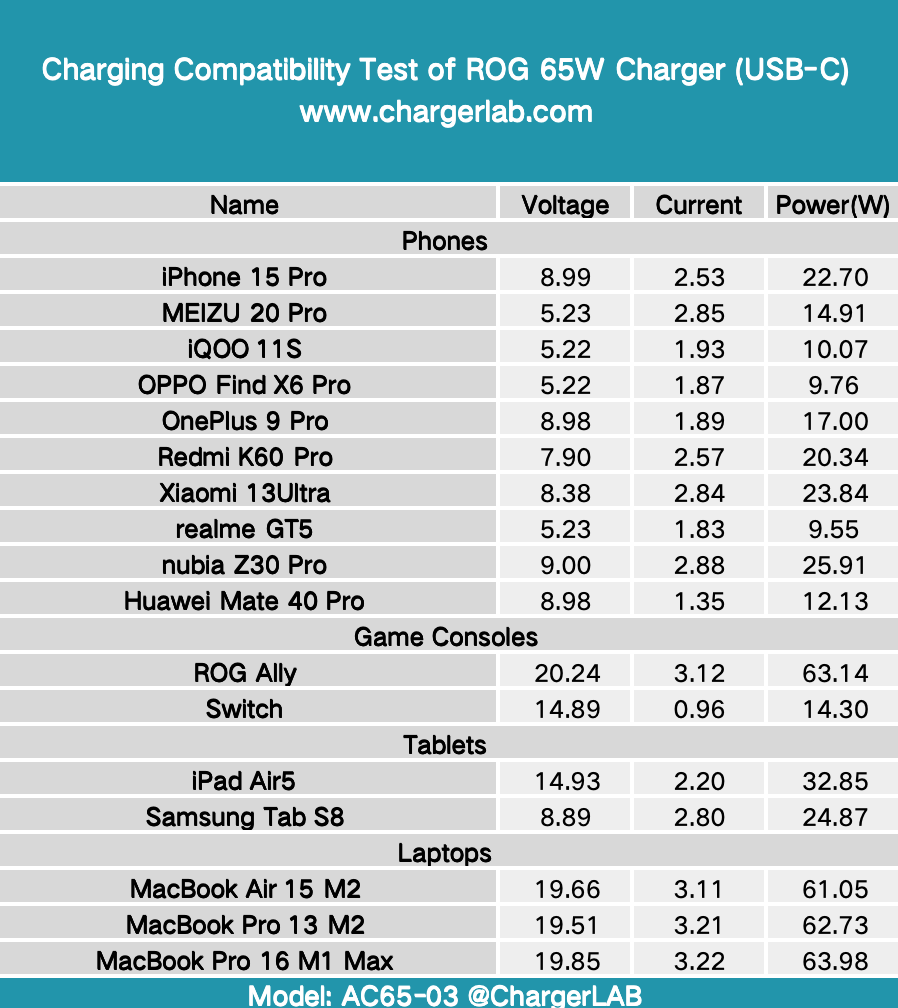
As you can see, there is no compatibility issue.
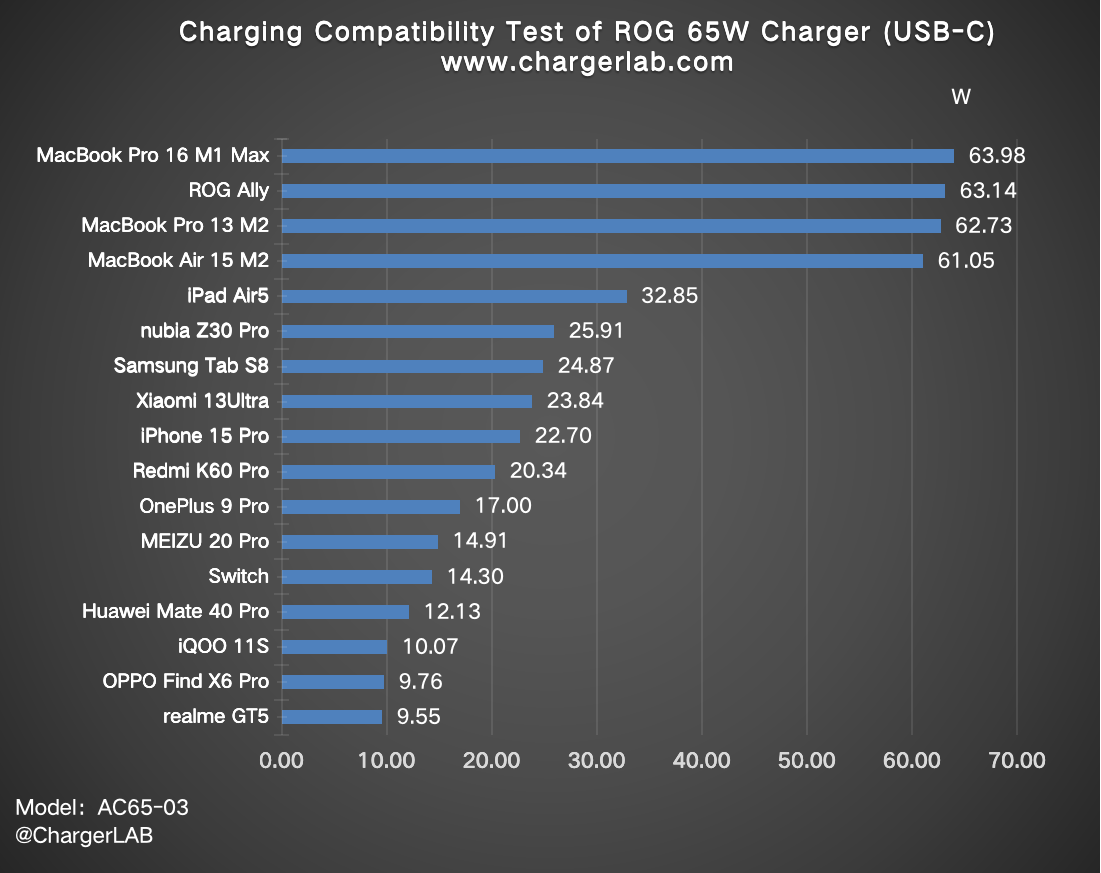
We have compiled all of the test results into a bar chart. The charging power of mobile phone devices remains in the range of 10-25W, which is lower than tablets, laptops, and other devices. At the same time, for the ROG Ally, it can provide PD fast charging that is similar to that of some laptops, with a power of about 63W.
USB-A
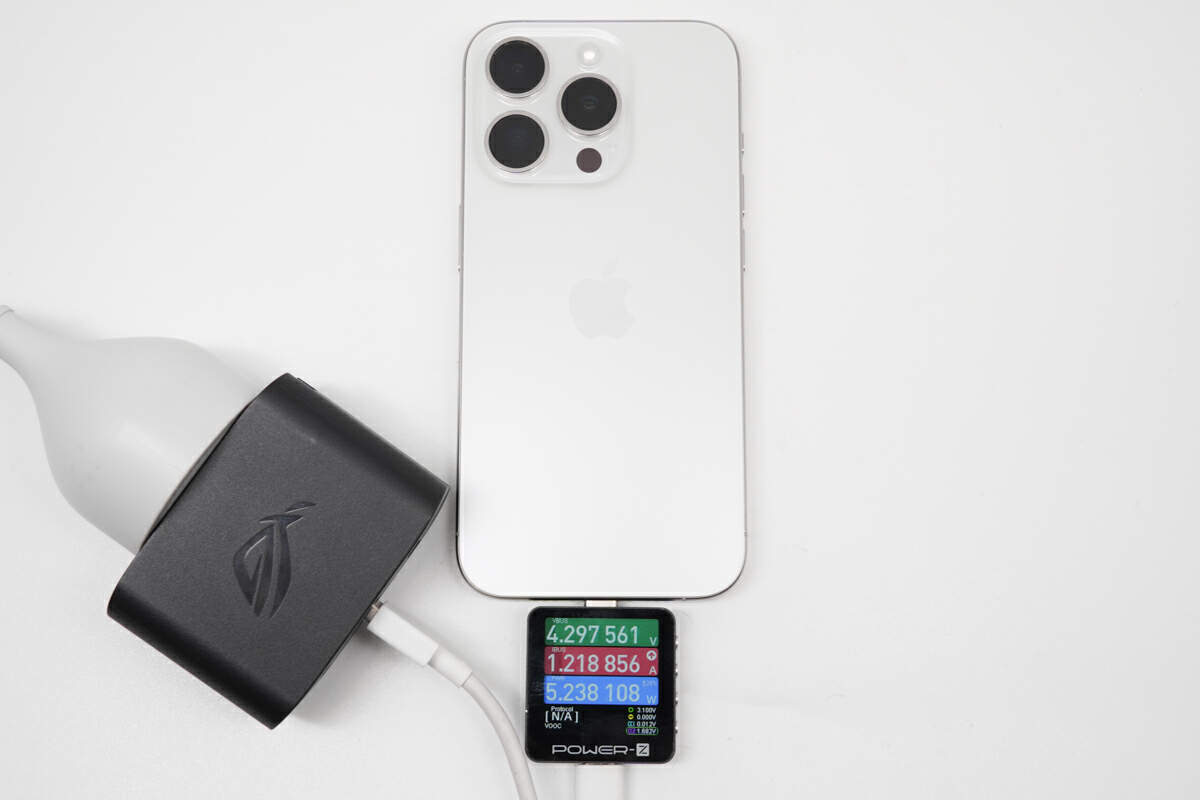
Our tester shows that when connected to iPhone 15 Pro, the input power is 4.3V 1.22A 5.24W.
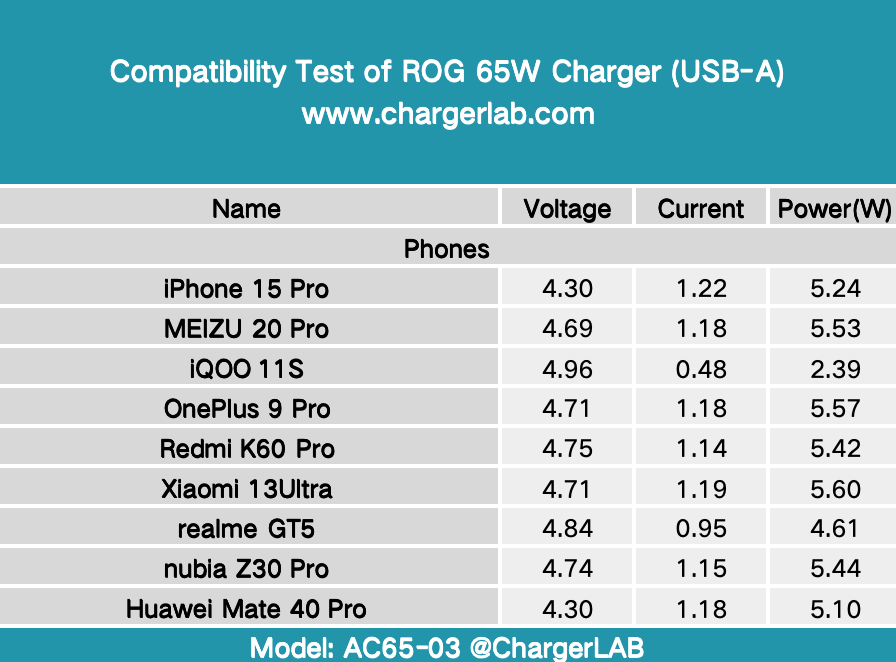
Every smartphone we tested triggered 5V1A.
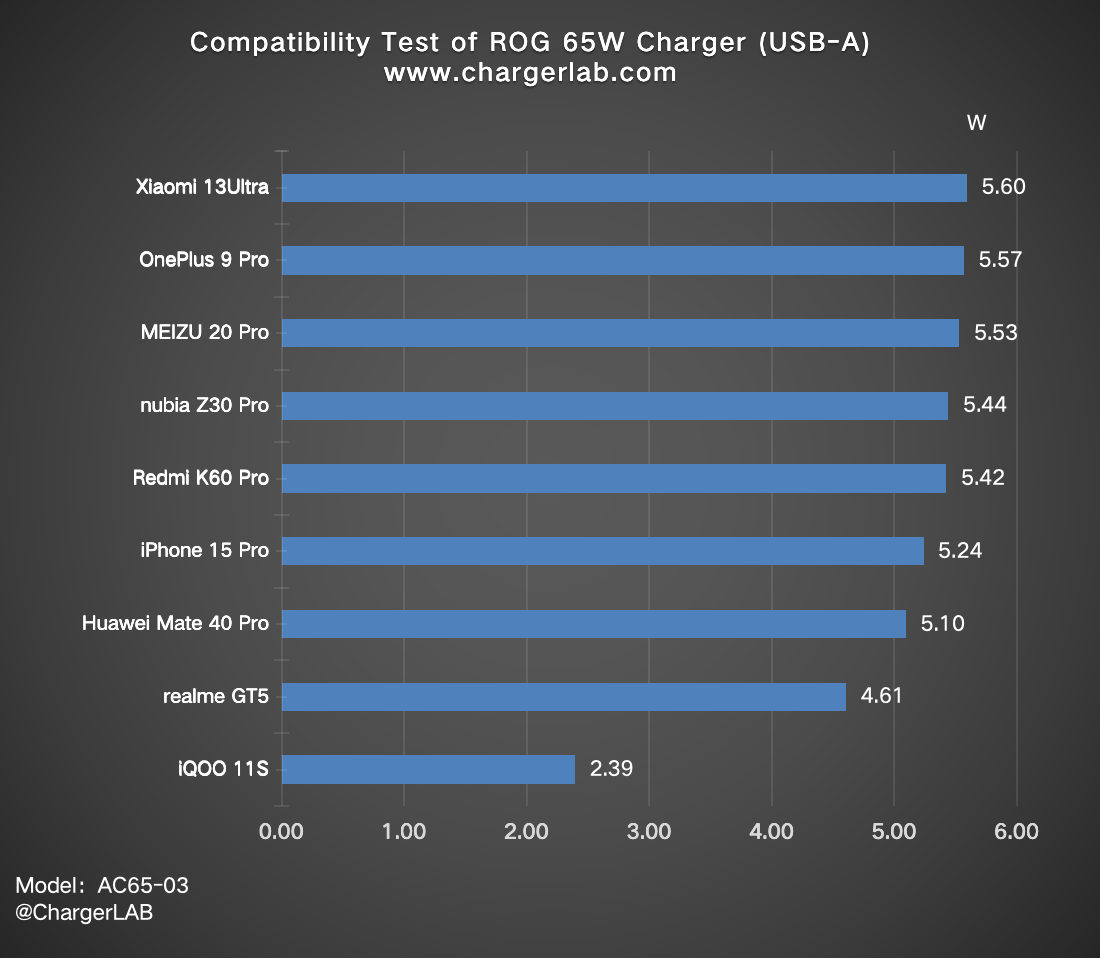
After compiling and creating a new bar chart, we noticed that the charging power of most devices is around 5W.
Full Charging Test
Next, we'll use it to fully charge the iPhone 15 Pro.
The charger will be put into a 25°C (77℉) thermotank throughout the test. Here is the charging curve made by the PC software of KM003C.
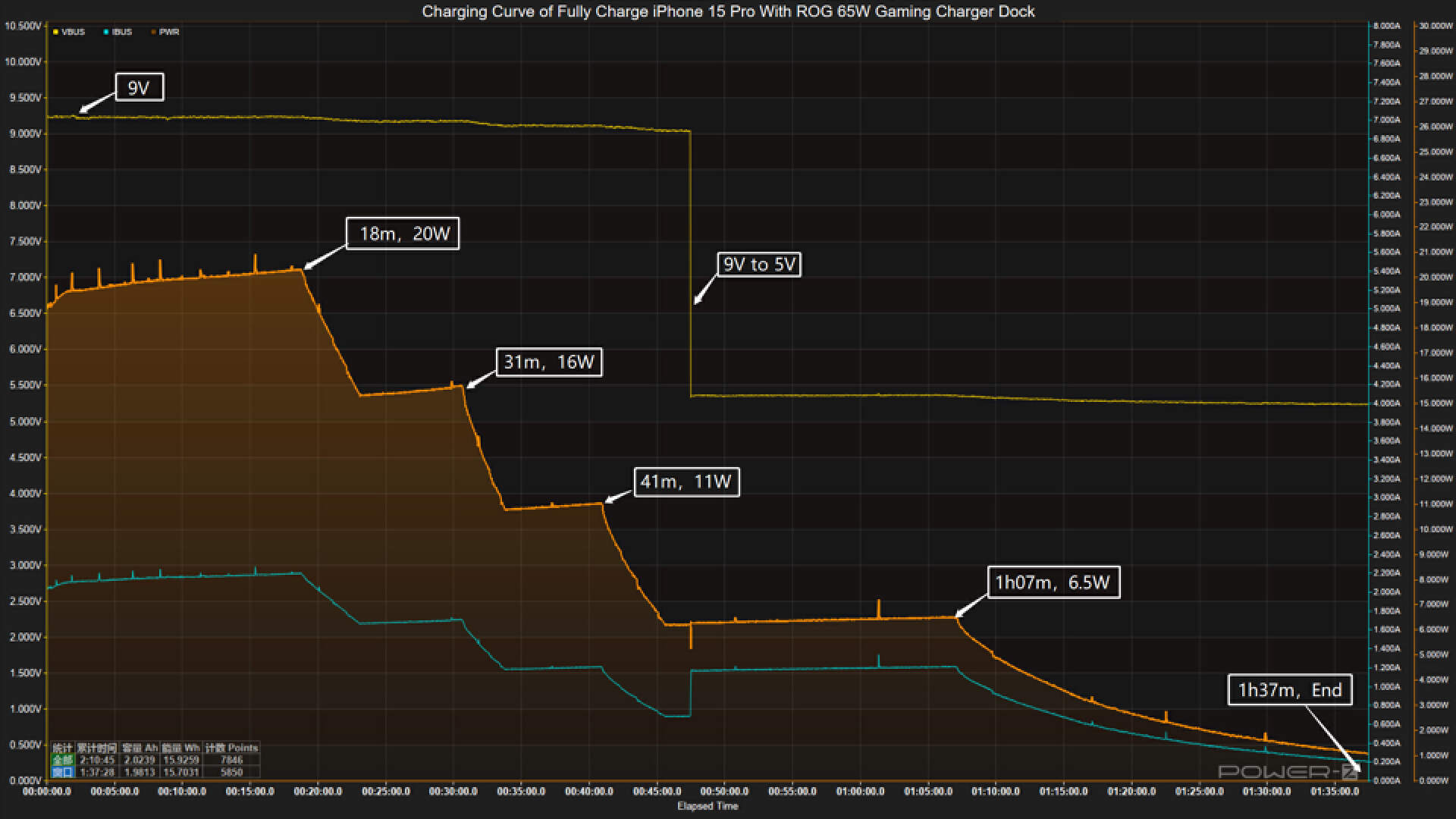
The voltage stays at 9V first. The charging curve can be divided into five parts. In the first part, the peak power stayed at 20W from the first 18 mins. Then, the power gradually drops to 16W, 11W and 6.5W in turn. At the same time, the voltage dropped to 5V. The final part begins at one hour and 7 mins, and the power slowly drops to almost zero. It takes one hour and 37 mins to be fully charged.
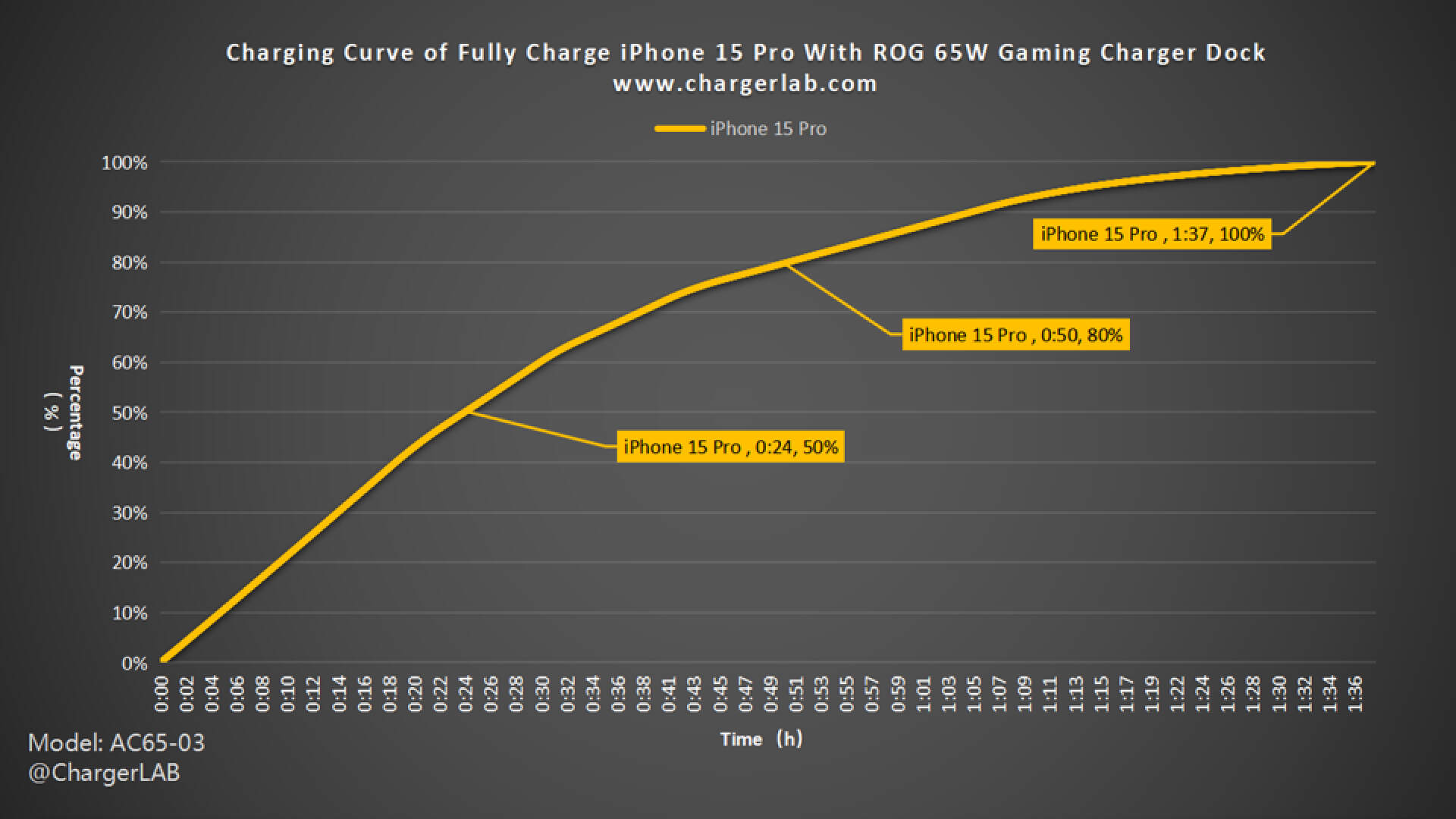
We plot it into another curve to see how fast it can be. It can charge the iPhone 15 Pro to 50% in 24 mins and 80% in 50 mins, and it also reaches 100% in 1 hour and 37 mins.
Next, we'll use it to fully charge the MacBook Air 15.
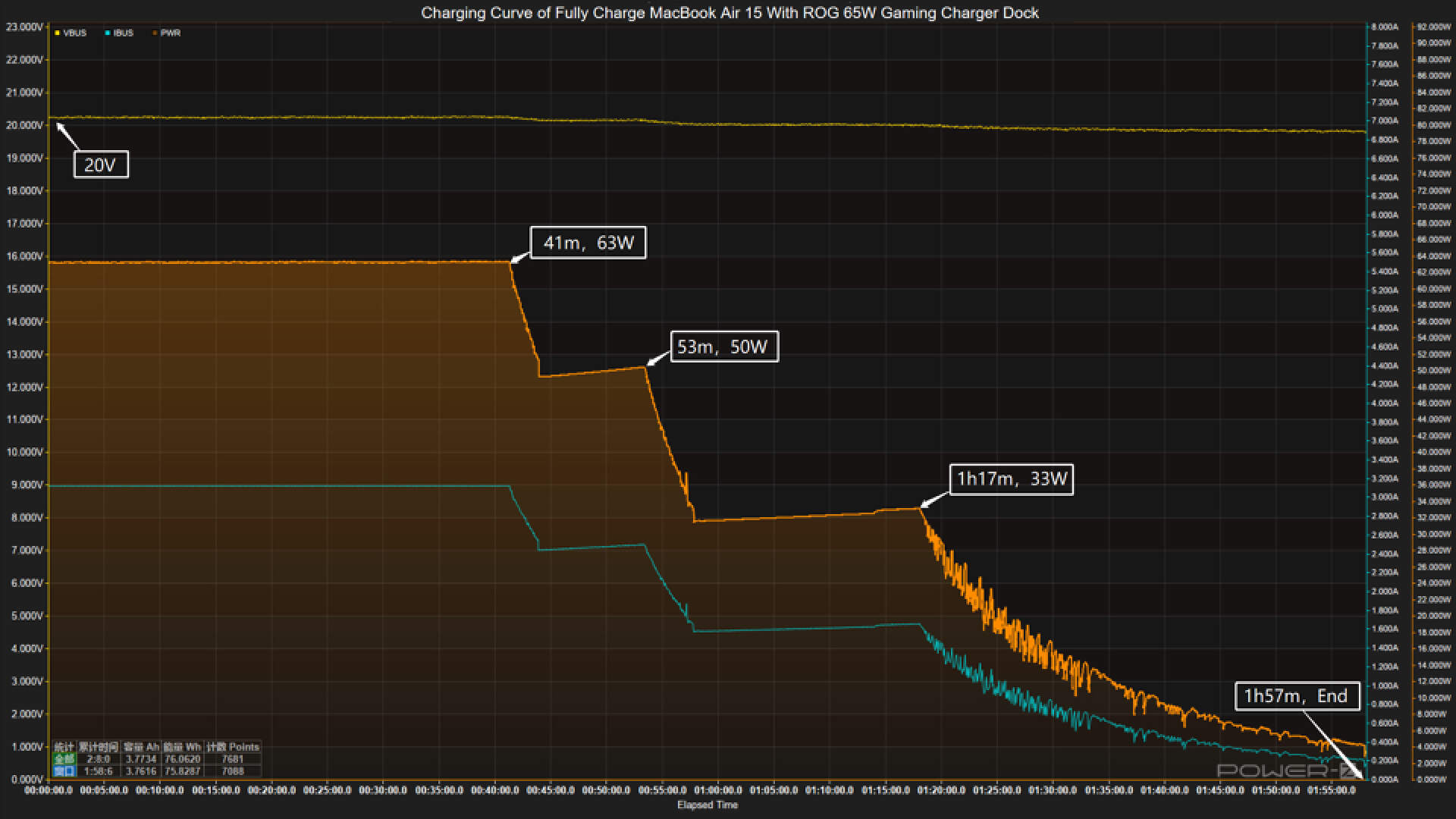
The voltage is always around 20V. The charging curve can be divided into four parts. In the first part, the peak power stayed at 63W from the first 41 mins. Then, the power gradually drops to 50W, and 33W in turn. The final part begins at one hour and 17 mins, and the power slowly drops to almost zero. It takes one hour and 57 mins to be fully charged.
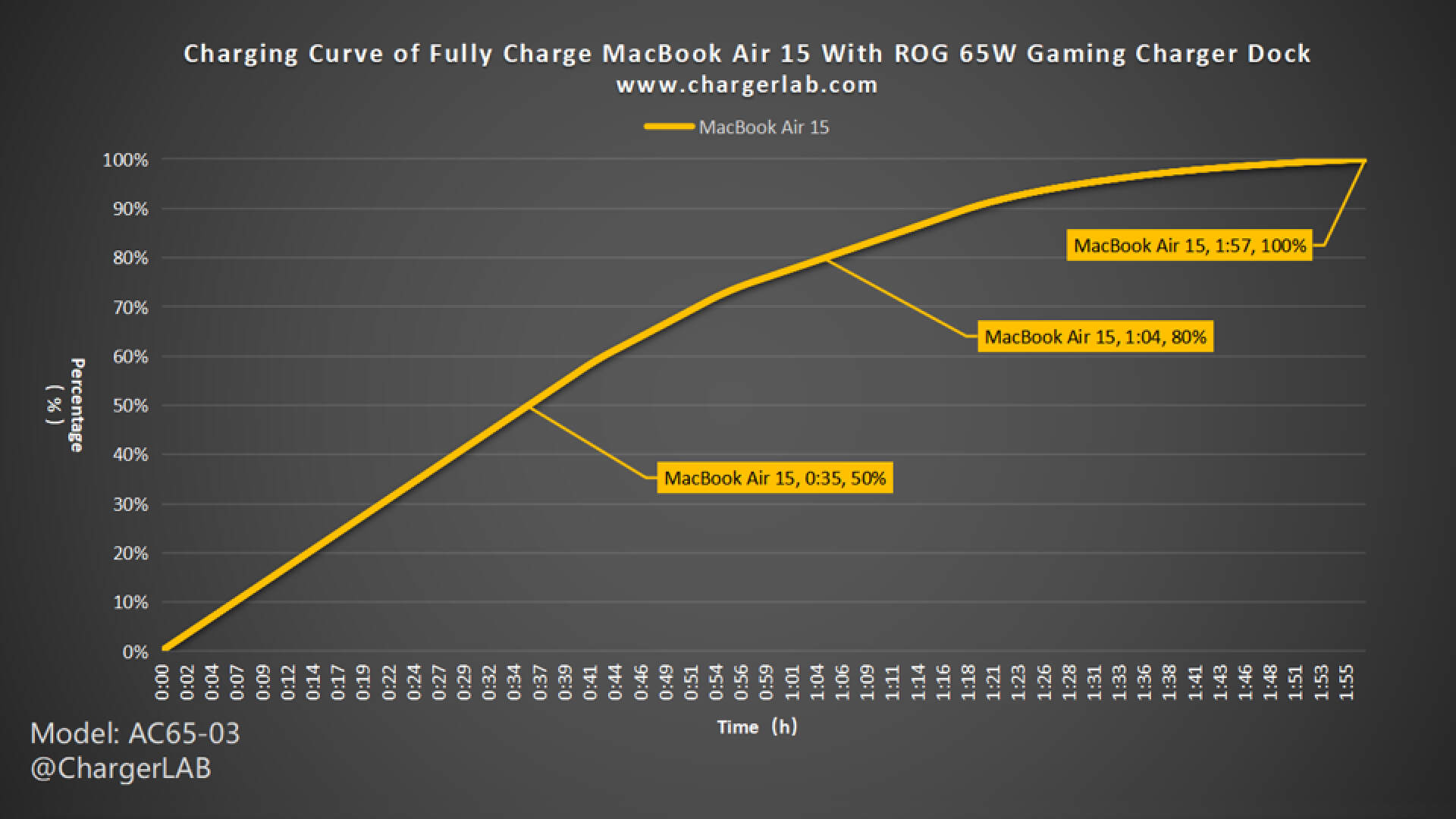
We plot it into another curve to see how fast it can be. It can charge the MacBook Air 15 to 50% in 35 mins and 80% in 1 hour and 4 mins, and it also reaches 100% in 1 hour and 57 mins.
Standby Power Test
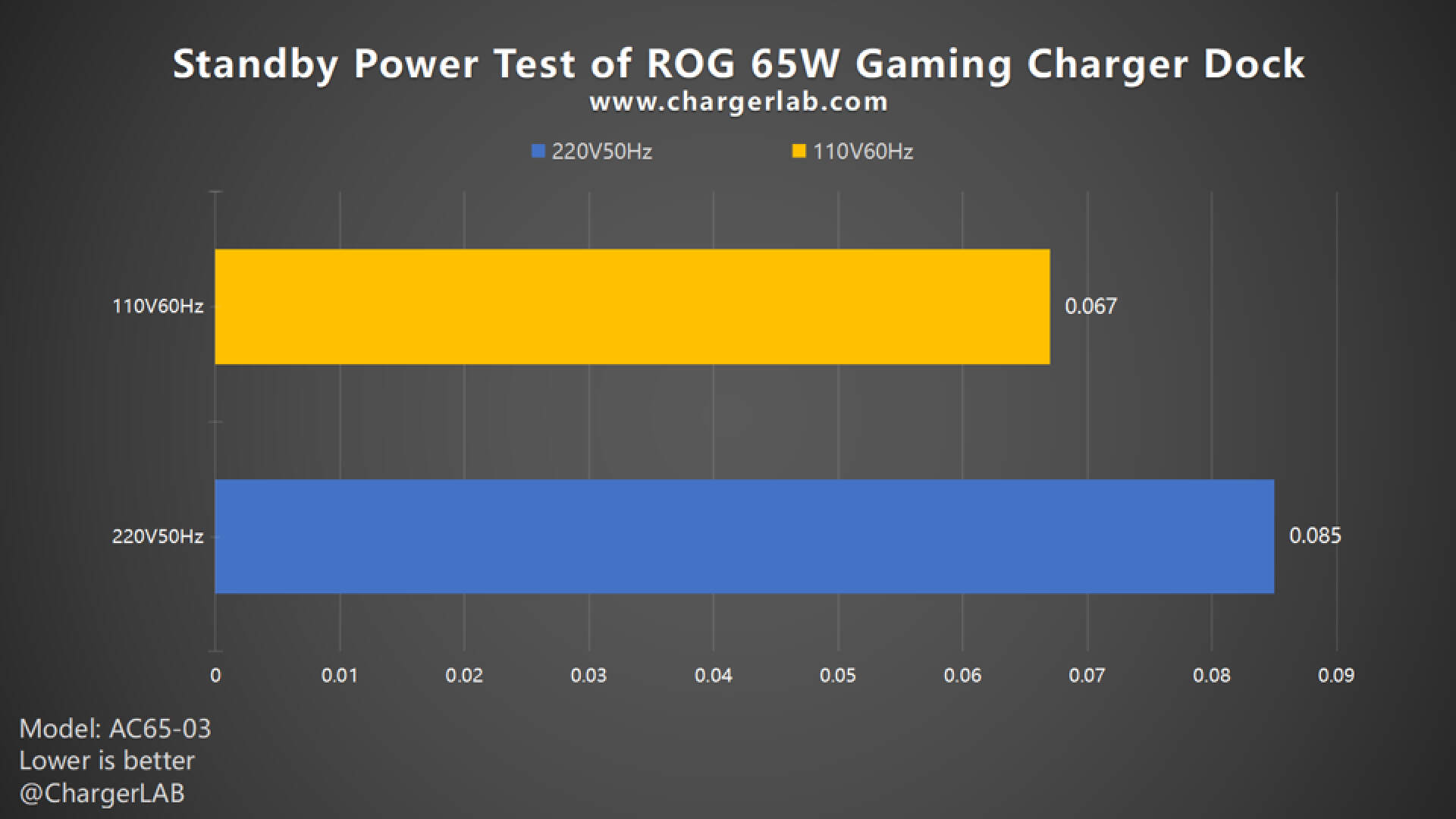
The power consumption at 220V 50Hz is 0.085W, and 0.067W at 110V 60Hz, which is about 0.79 and 0.59KW·h in one year, respectively. So, you do not need to worry about the waste of the electricity.
Conversion Efficiency Test
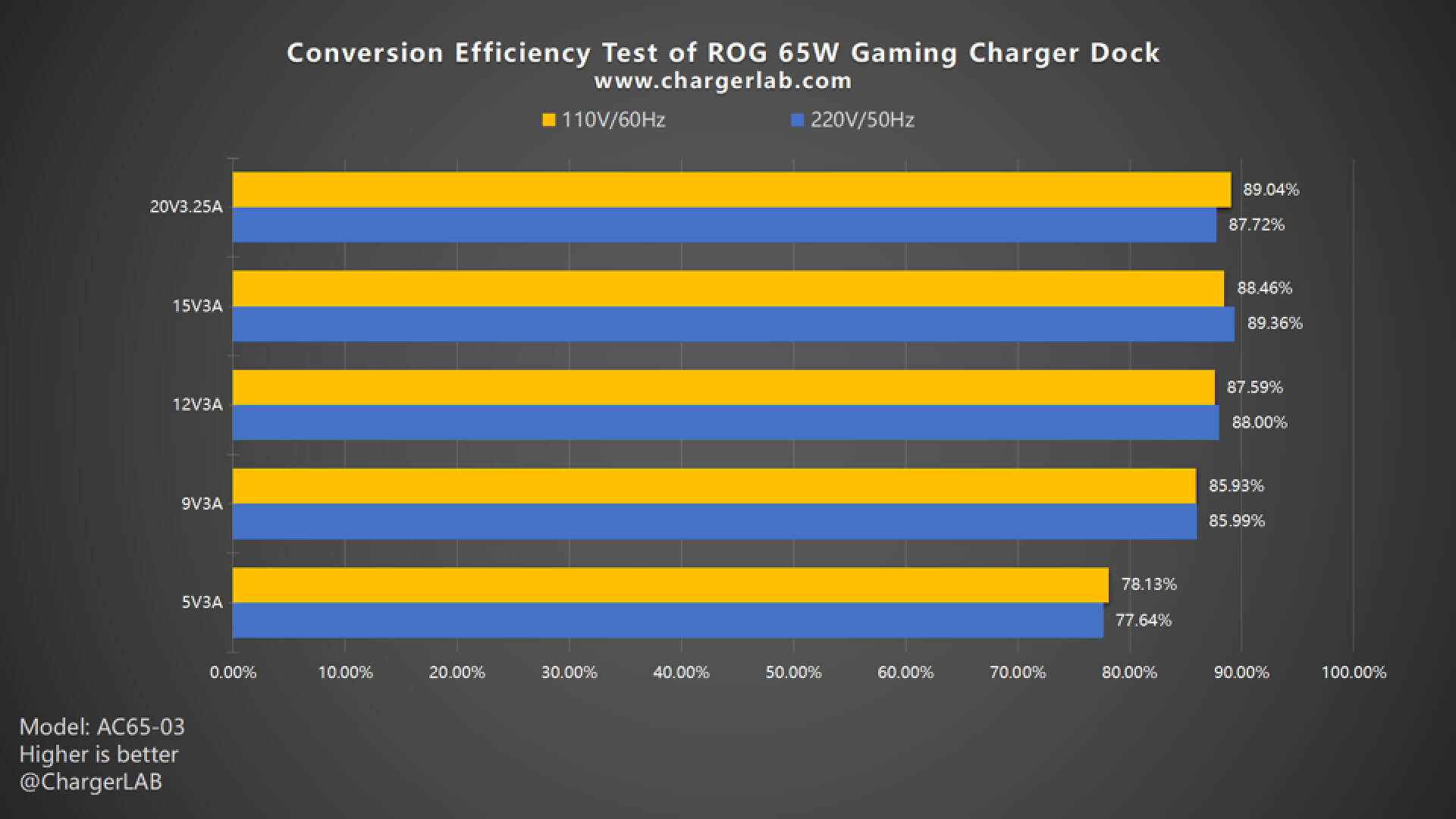
The conversion efficiency varies from 77.64% to 89.36% at 220V 50Hz, and the conversion efficiency varies from 78.13% to 89.04% at 110V 60Hz. The charger achieves a conversion efficiency of up to 89.04% under the two voltages, which is at the mainstream level for similar devices.
Ripple Test
Power adapters rely on switch-mode power supplies, which means that the output from the transformer's secondary winding is not direct current and must be rectified and filtered by capacitors before being outputted. As a result, ripples can exist in the output signal. To evaluate the quality of the adapter's output, ChargerLAB employs an oscilloscope to test the ripple value of the converter's output and compare it with industry standards. In general, the lower the ripple, the higher the output quality.
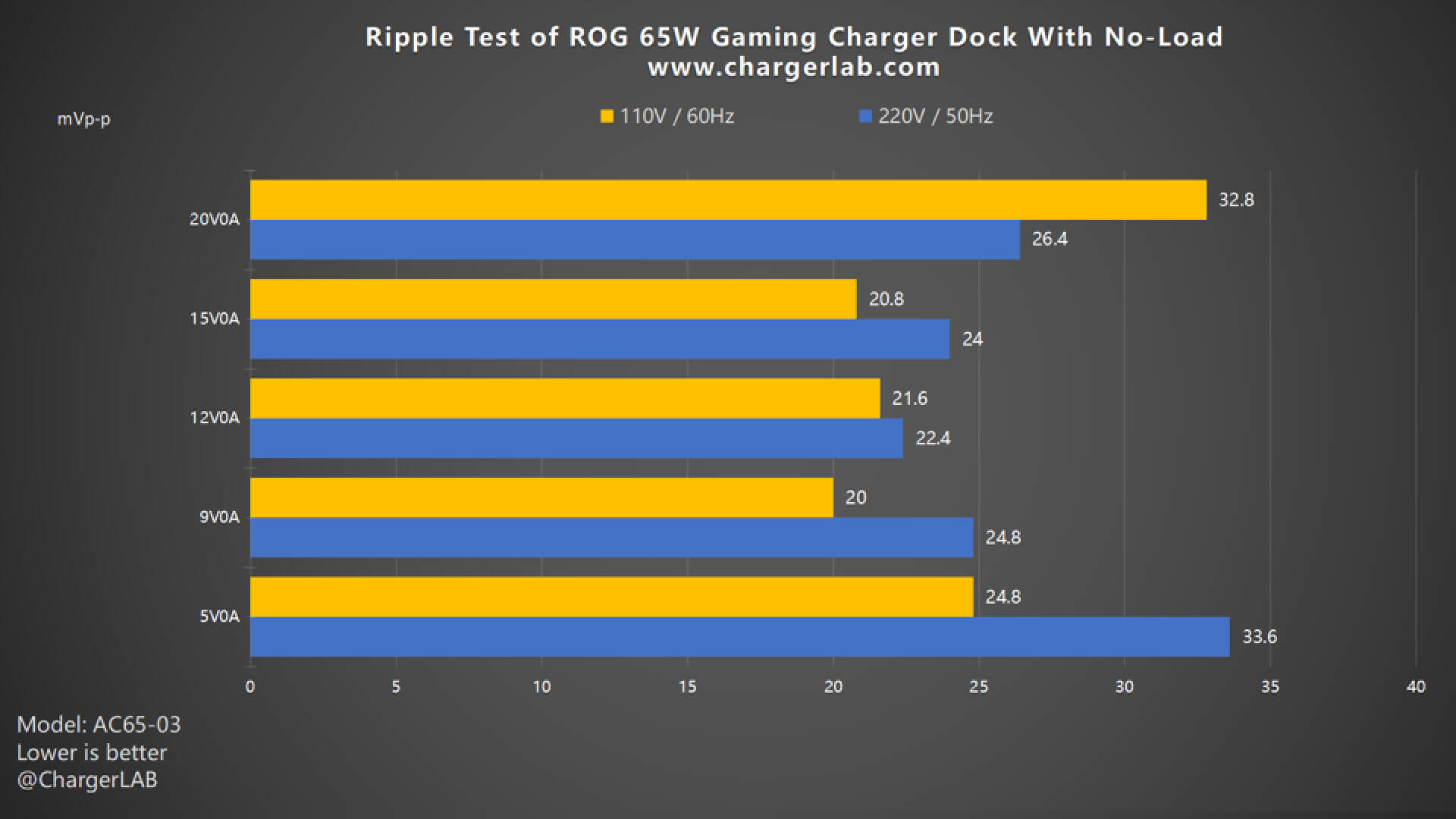
Firstly, let's check out its ripple without load. When the output is 9V 0A, the lowest ripples are around 20 mVp-p. When the output is 5V 0A, the highest ripples are around 33.6 mVp-p.
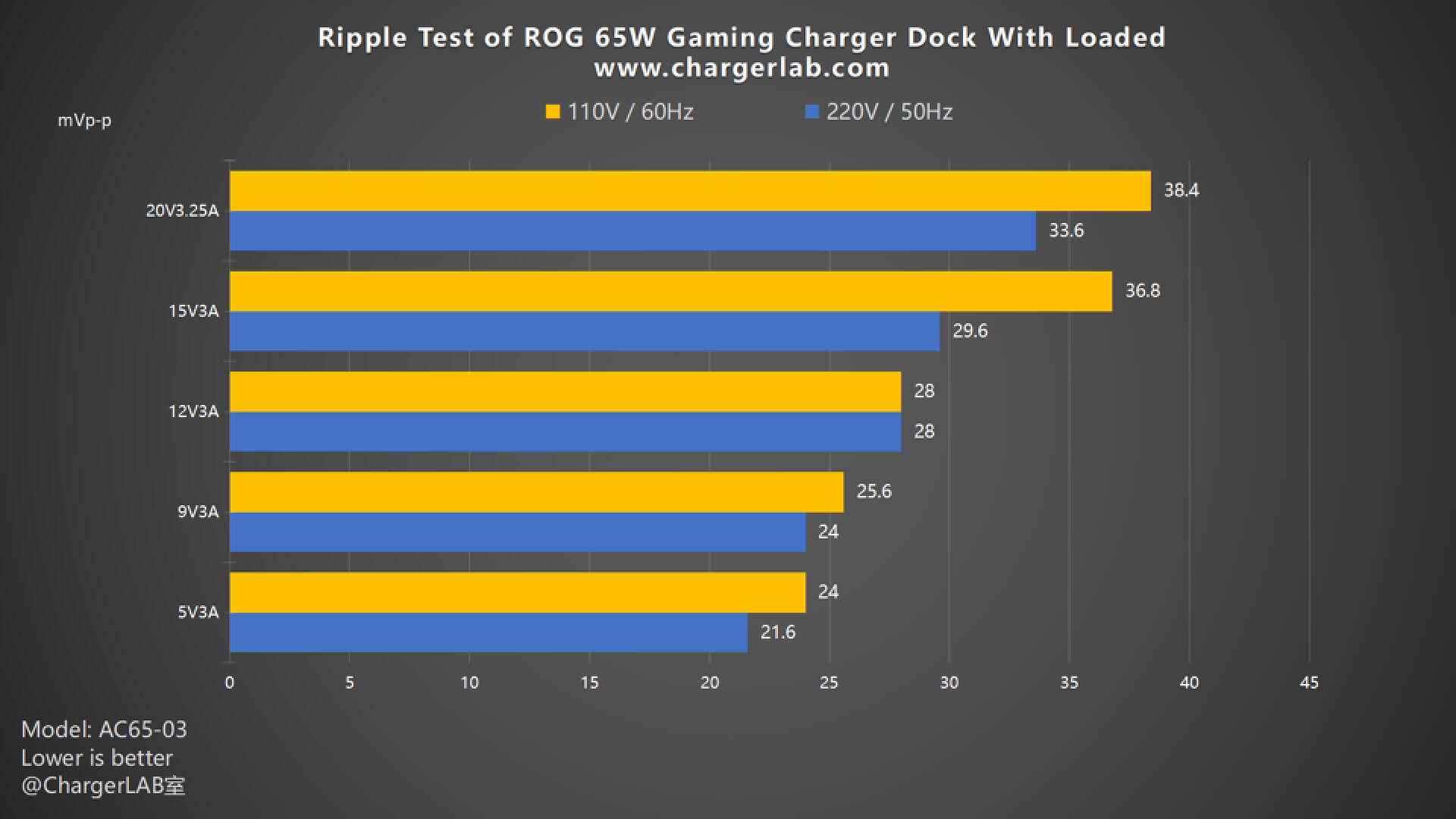
Then, move to the ripple test when loaded. The overall ripples are higher than without load. When the output is 20V 3.25A, the highest ripple is 38.4 mVp-p. When the output is 5V 3A, the lowest ripple is 21.6 mVp-p. Overall, the performance is good.
Temperature Test
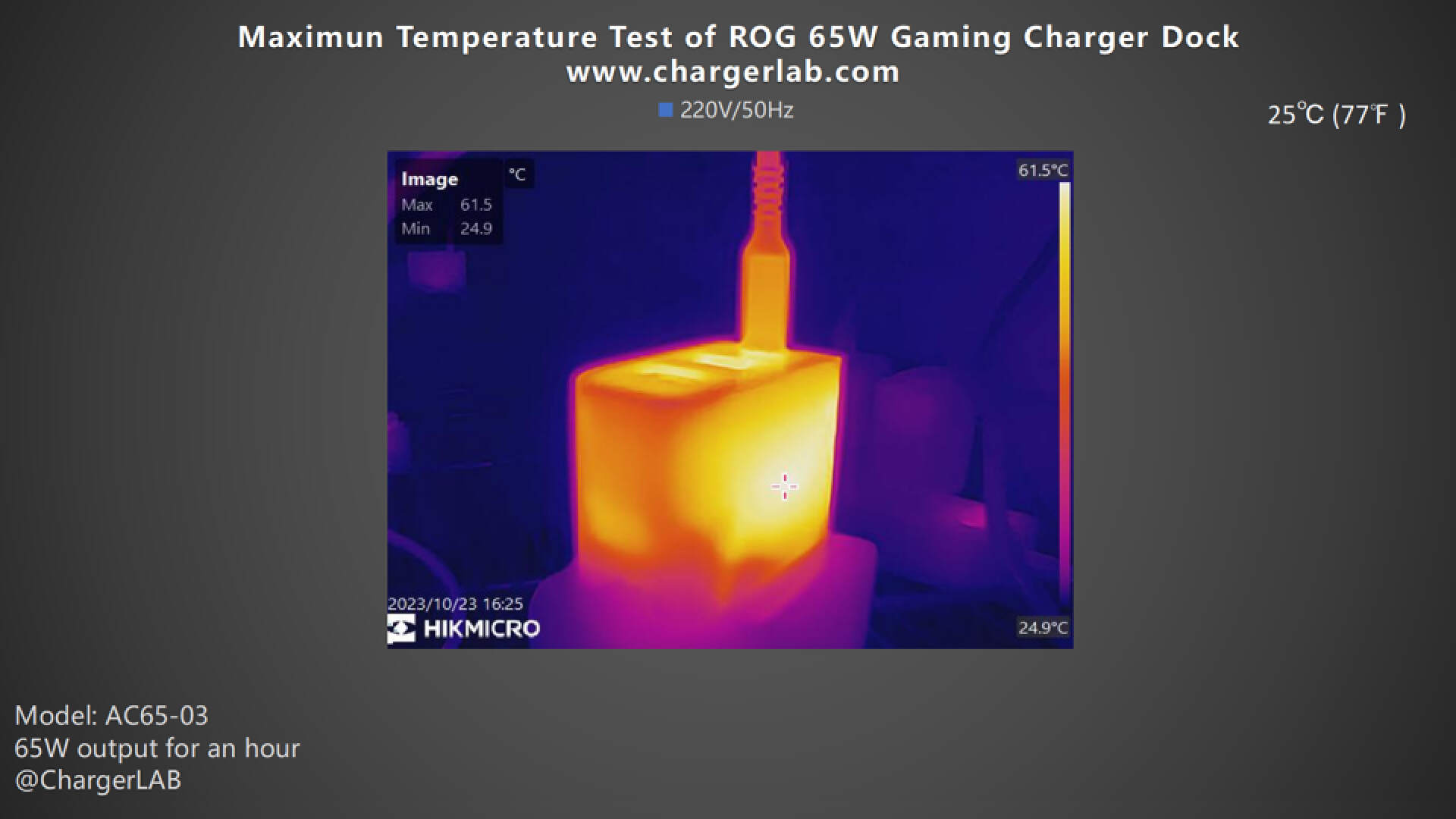
Under 220V 50Hz, the front is 61.5°C (142.7 ℉).
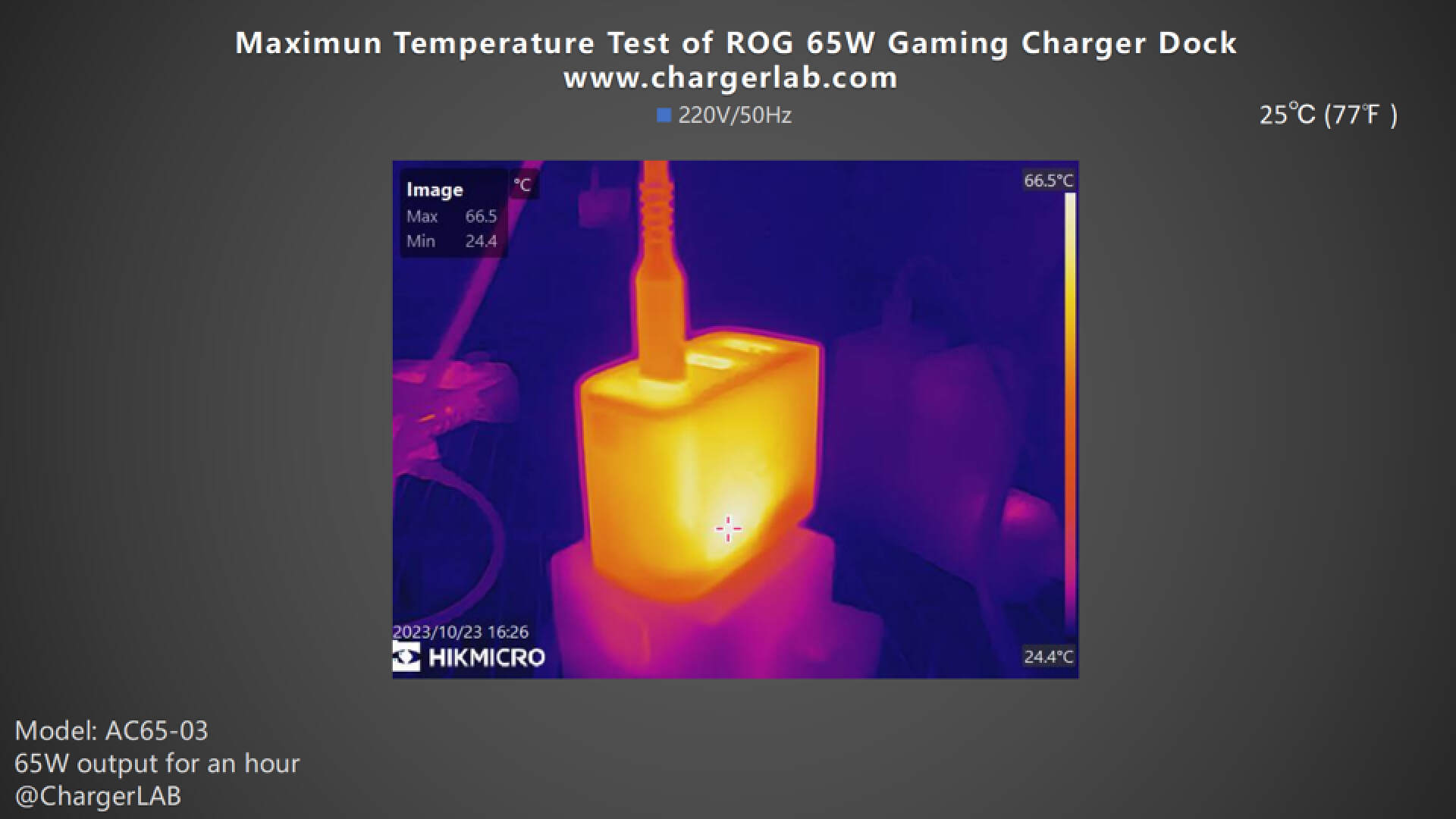
And the back is 66.5°C (151.7℉).
Moving on to the 110V 60Hz.
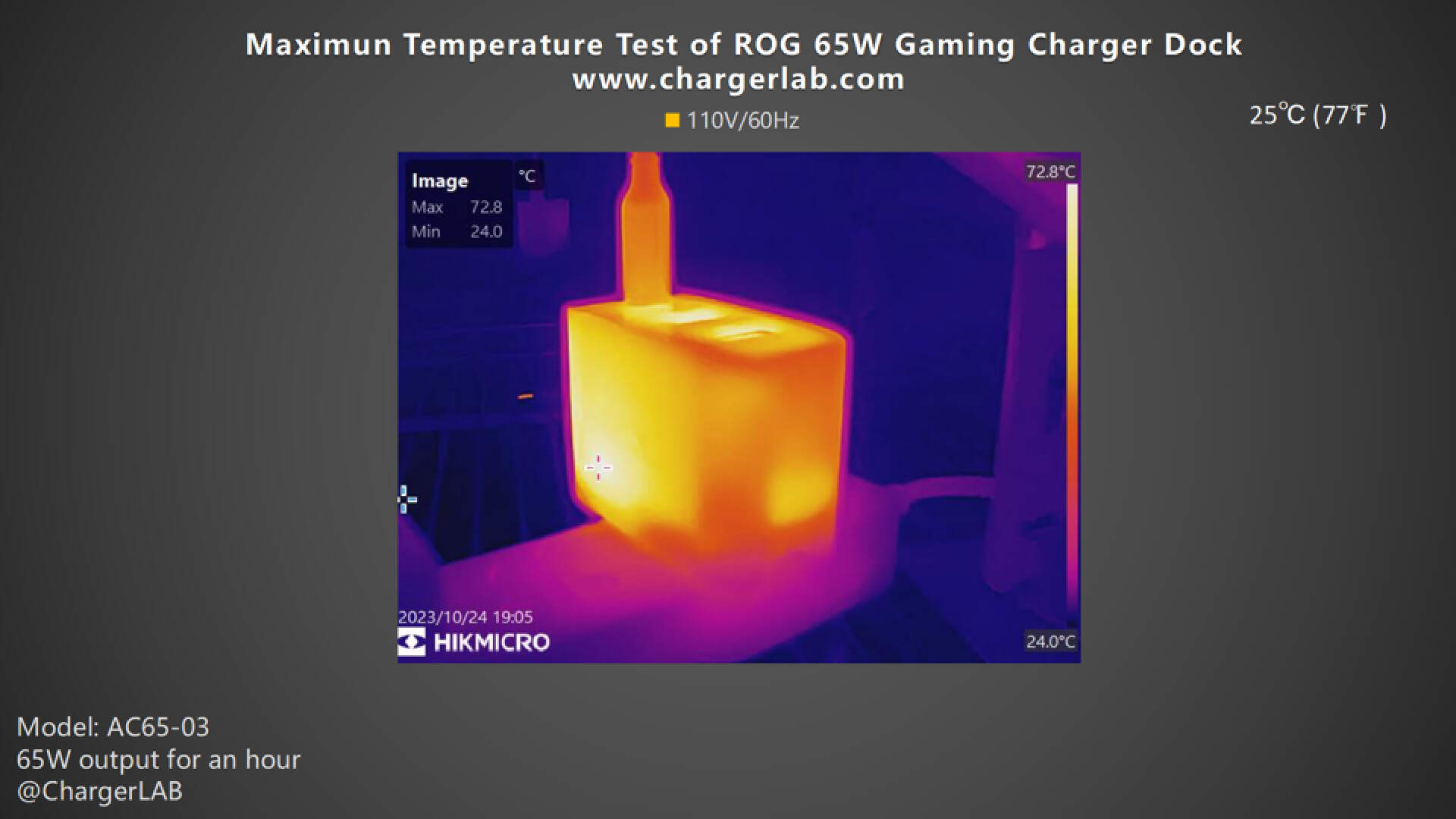
The maximum temperature on the front is 72.8°C (163.04℉).
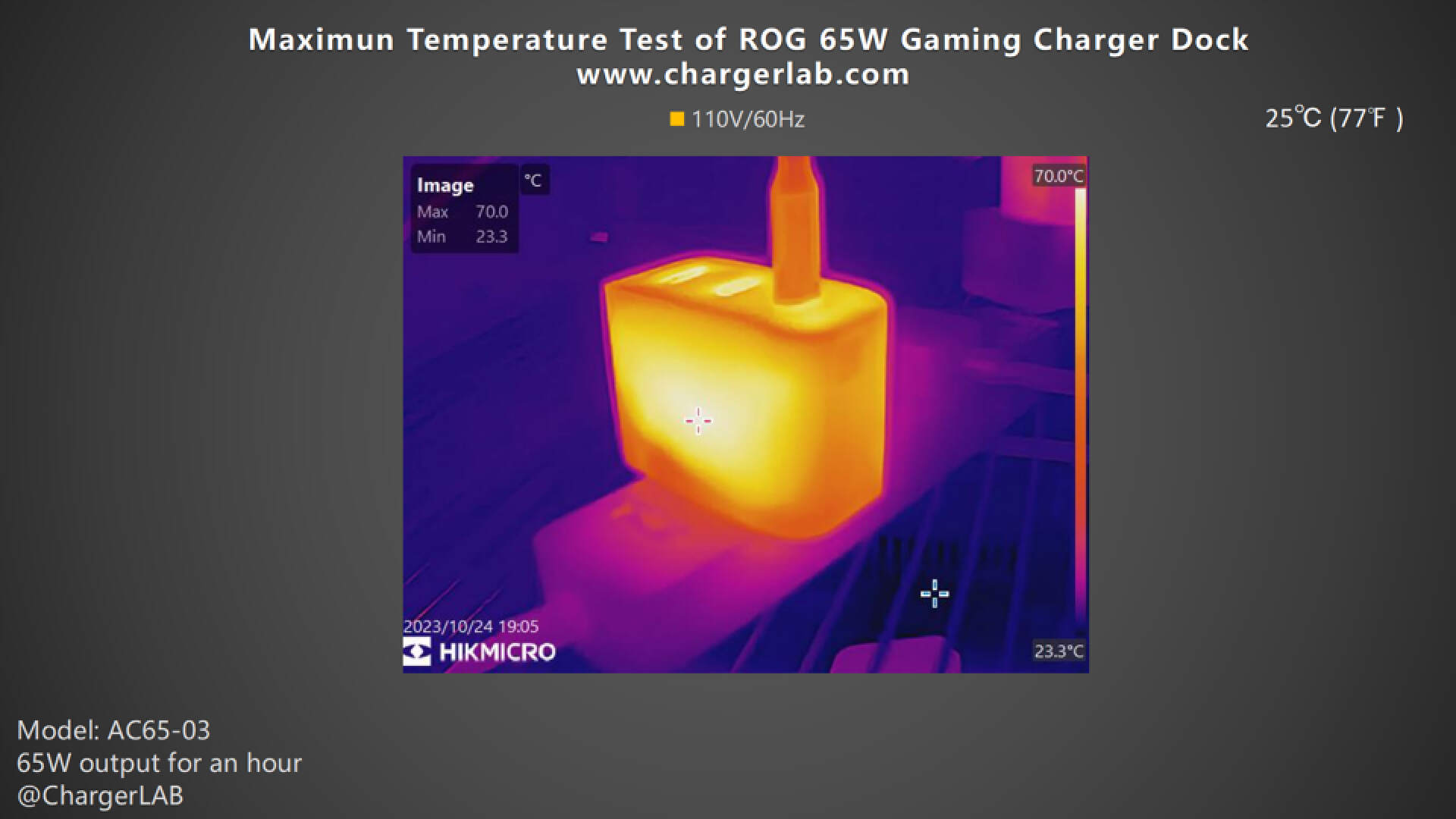
And the maximum temperature on the back is 70°C (158℉).
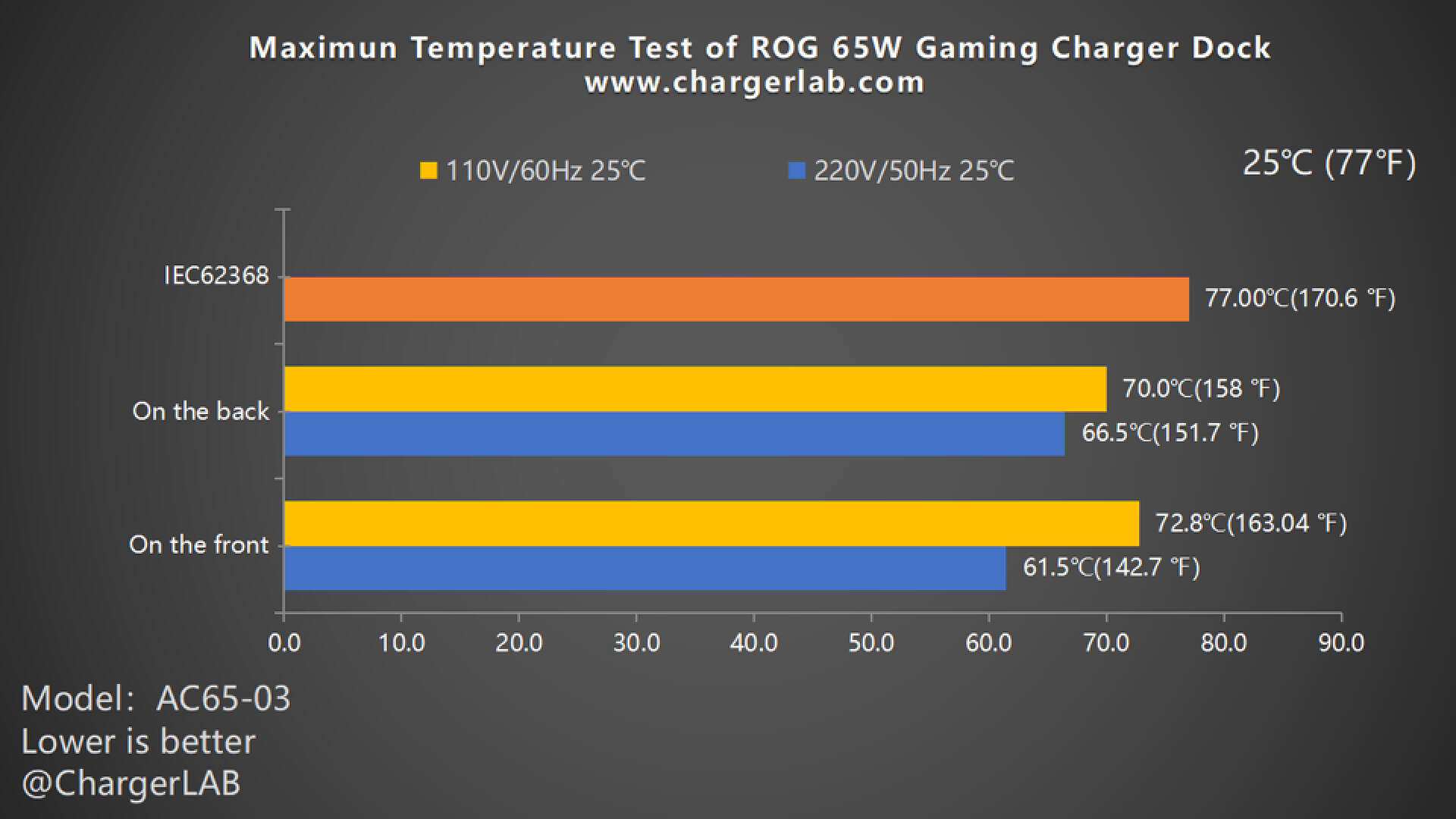
Creating a bar chart to represent the data, it is evident that this charger reaches a maximum temperature of 72.8°C when operating under 220V 50Hz and 110V 60Hz voltage settings. This temperature complies with the International Electrotechnical Commission (IEC) 62368 standards for electronic and electrical equipment test, which stipulates that the temperature should not exceed 77°C, but it is very close.
Summary of ChargerLAB
Well, that’s all our tests for the ROG 65W Gaming Charger Dock.
It has good compatibility and low standby power consumption. The conversion efficiency and ripple performance are decent. It integrates fast charging, data transmission, display output, and other functions into one. For users who need to create a simple desktop but also need to expand the display of game consoles and laptops, it can easily get the job done. It's a lightweight and high-performance desktop product.
Related Articles:
1. New Gamer on the Block | ASUS Launched the ROG Ally Handheld Gaming Console
2. How Fast ASUS ROG Ally (Z1 Extreme) Is Charged? - ChargerLAB Compatibility 100
3. From Gaming to Productivity: ROG Ally's Dual Persona

